| |
|
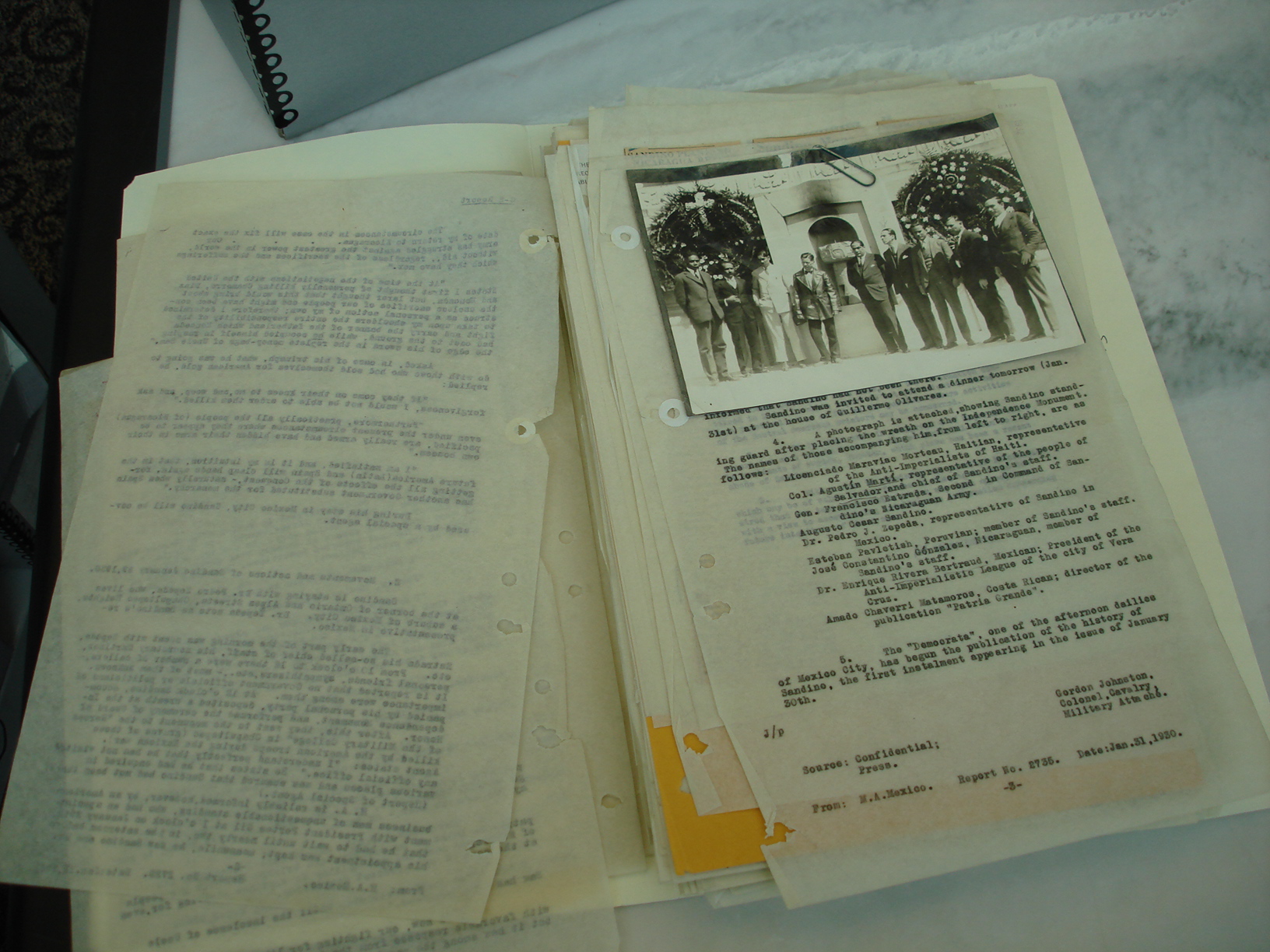 Page
6
of Fat File on Sandino Situation,
US Military Intelligence Division, 1928-33 Page
6
of Fat File on Sandino Situation,
US Military Intelligence Division, 1928-33
Documents are presented
here in their original sequence
as found in three bulging file folders
titled "Sandino Situation,"
Record Group 165, Entry 77, Box
2653, US National Archives II,
College Park MD.
Grateful appreciation is extended to Mr. Brandon Ray,
Summa Cum Laude college graduate from
Ashford University in Iowa (with a B.A. in
History and a minor in Political Science) for
his exacting transcriptions on this page and the
previous five pages. Thank you Brandon!
|
|
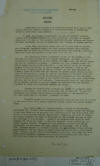
|
1. October 7, 1931.
Naval Intelligence Report on
Sandino, no author indicated.
"104-400 ¶ NICARAGUA ¶ SANDINO ¶
Recurrent and believed to be
reliable reports have come in
that Sandino was very sick and
desirous of leaving Nicaragua to
regain his health in some other
place unknown. ¶ José de
Paredes, ex-publicity man and of
Sandino’s staff in company with
Socrates Sandino came from
Mexico and proceeded via
Tegucigalpa into the wilds of
the disputed territory between
Honduras and Nicaragua with the
avowed purpose of conferring
with Sandino on matters unknown.
¶ Since then, recurrent rumors
have had it that José de Paredes
was killed at Sandino’s orders
and that Sandino himself was a
virtual prisoner of his Jefes
who refused to let him leave the
country, realizing they would
lose the prestige of his name if
he did so. ¶ The Nicaraguan
bandit ammunition supply and the
method of procurement has been
reported on and remains
unchanged. In order to buy
ammunition in Honduras and at
the Islands and capes along the
Belize coast, all that is
necessary is money. A possible
and very probable source of
bandit money lies in cattle
smuggling. A beef can be bought
in northern Segovia at from $4
to $8. It can be stolen for
nothing. Beef on the hoof brings
as high as $30 to $40 in
Salvador and the time necessary
to rustle a bunch of cattle from
one country to another means
nothing in the lives of the
bandits. Again, it must be
remembered that bandit Jefes are
constantly levying tribute on
the Nicaraguan merchants and
that although many such levys
[levies] are reported to the
Guardia Nacional, many also,
undoubtedly are not, but are
fully paid instead.
Circumstancial [Circumstantial]
proof of this lies in the
systemic raiding of certain
fincas and haciendas and the
absolute immunity to raids very
evidently enjoyed by others. ¶
Whether the bandits have
received any SOVIET or communist
money lately is not known. That
they at one time did is
positive. It must be remembered
that bandit Jefes address
communications to one another
as, and sign themselves as
“brother”, “comrade” or both. ¶
Brewer’s lagoon on the Honduran
North Coast and the Gulf of
Fonseca on the South Coast still
remain favority [favorite?]
landing points for bandit
ammunition. ¶ One, Mario Ribas,
of Spanish origin, resident of
Tegucigalpa, Associated and
United Press correspondent, is a
message center for Sandino. At
one time Ribas was in sympathy
with Sandino’s cause and even
helped some of the bandits
passing through Tegucigalpa.
Lately he has come to realize
the damage banditry is doing to
Nicaragua and has offered his
aid to ehlp [help] rid Nicaragua
of its scourge. Ribas is in
communication with one José
Idiaquez who lives in Danli, is
slightly demented, very
pro-Sandino and a bandit message
center. Idiaquez has two
brothers who are very strong
politically and the three own
large amounts of property. Due
to this, José Idiaquez enjoys a
practical immunity and
suggestions to the Honduran
government to have him cease his
pro-Sandino activities have
proven fruitless. However, as
the bandit sympathizers do not
know that they have lost Mario
Ribas’ support, Idiaquez has
remained in communication with
Ribas and Ribas has turned in
the information so acquired."
|
|
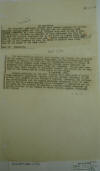
|
2.
September-October 1931.
G-2 Newspaper article translations:
Sept 29: El Cronista,
Mexico City. Oct 7 &
9: El Sol, Mexico City.
"29 September ¶ “El Cronista”
published article that Sandino
ordered his brother Socrates
Sandino bound and held prisoner
and his Secretary, José Paredes,
executed by firing squad,
because they came to him to urge
him to desist. He also is
reported to have abandoned his
trip to Salvador for medical
treatment due to the death of
Miguel Angel Ortez whom he
considered his right hand man.
Three students of Argentina who
came to the Segovias to join the
ranks of Sandino were found dead
on the banks of the Tuma river.
¶ COPY TO: Comsperon. ¶ Oct.
7/31 ¶ “El Sol”--article stating
that Sandino has ordered the
execution of his Sergeant Major,
Ventura Rodriguez, and his
brother, who were accused of
treason in that they led
Government troops to combat in
which General Miguel Angel Ortez
was killed; which sentence was
executed even before positive
proof was acquired. He has also
promoted Juan Pablo Umanzor to
Brigadier General and placed him
in command of the column led by
Ortez prior to his death. ¶ 9
October, 1931. ¶ Article
published in “El Sol” stating
they were shown a letter from
Sandino’s Secretary, Captain
José de Paredes (Mexican) to the
effect that neither he nor
Sandino’s brother, Socrates, had
suffered any mistreatment, and
the report probably originated
from the fact that he sat on a
court martial which condemned a
Sandinista and his two sons for
the treason of leading a guardia
column commanded by Yankee
Officers to the combat in which
Captain Agapito Altamirano was
killed."
|
|
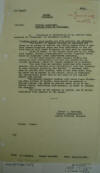
|
3.
September 15, 1931. G-2
Report on Mexican Press on
Nicaragua, Capt. Robert E.
Cummings, Acting Military
Attaché, Mexico City.
"G-2 Report ¶ 3850: ¶ MEXICO ¶
POLITICAL ¶ SUBJECT: Foreign
Relations: ¶ Mexican Press on
Nicaragua. ¶ 1. Following is
translation of an article which
appeared in “Excelsior” of
September 12, 1931: ¶ “Sandino
enjoys good health and will
continue the struggle. ¶ “The
health of General Sandino is
excellent and there is no reason
to believe the absurd rumors
which a certain Central-American
paper has been publishing to the
effect that he will leave
Nicaragua to seek rest or
recovery. ¶ “This, at least, is
the report given out by Dr.
Pedro José Zepeda, General
Representative of the ‘Ejercito
Libertador de Nicaragua’, when
interviewed yesterday. ¶ “It had
been reported that General
Sandino was suffering from
tuberculosis and that his health
was seriously affected, - which
Dr. Zepeda assures us is untrue.
¶ “Not only from my personal
relations with General Sandino,
but on account of my profession,
I have had occasion to keep
informed regarding his health. I
remember that when he visited
this capital, even in his very
short stay, he added ten
kilograms to his weight, which
is technical and indisputable
proof that he not only is not
ill, but enjoys good health. ¶
“Furthermore, General Sandino
will never leave Nicaragua, from
motives of health, even should
he contract a serious malady;
and under no pretext would he go
to the United States, soliciting
safe-conduct, in order to
abandon the struggle. ¶ “The
rumor of his illness is absurd,
and of course originated with
enemies of the cause.” ¶ Robert
E. Cummings, ¶ Captain,
Infantry, DOL ¶ Acting Military
Attaché. ¶ Source: Press. ¶ C/p
¶ From: M.A.Mexico. ¶ Report
No.3537. ¶ Date: Sept. 15,
1931."
|
|
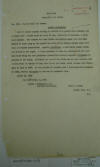
|
4.
September 2, 1931. G-2
Report on Bandit Activities, Lt.
Col. Fred T. Cruse, Military
Attaché, San José.
"NICARAGUA ¶ POPULATION AND
SOCIAL ¶ No. 2700 – Public Order
and Safety. ¶ Bandit Activities.
¶ Late in August Captain
Frisbie, in command of a patrol
from Quilali, had a fight with a
bandit force of about 70 men,
northeast of Chamaste, a place
near Quilali. The bandits had
both rifles and machine guns,
but were surprised in their camp
by the patrol and after about
twenty minutes those that were
not killed surrendered. Agapito
Altamirano, a well known bandit
chief, was killed in the fight.
A large quantity of arms was
captured but the most important
thing was that prisoners stated
that General Gregorio Colindres
was present at the fight.
Colindres was one of the first
men to join Sandino, but I have
heard no mention of him, that is
in the field, since Sandino left
Nicaragua in June of 1929. In
the picture of Sandino that I
forwarded from Honduras in 1928,
General Colindres is the man on
Sandino’s left. ¶ Report No.
1385 ¶ San José--Sept. 2, 1931 ¶
Source – Newspapers and personal
knowledge. ¶ Fred T. Cruse, ¶
Lieut. Col., F.A. ¶ M.A."
|
|
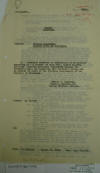
|
5.
August 25, 1931. G-2
Translation of "Sandino
Continues Victorious Against the
Yankees," La Prensa, 25
Aug 1931, Capt. Robert E.
Cummings, Acting Military
Attaché, Mexico City, p. 1.
"G-2 Report ¶ 3850: ¶ MEXICO ¶
POLITICAL ¶ SUBJECT: Foreign
Relations: ¶ Mexican Press on
Nicaragua. ¶ 1. Forwarded
herewith is translation of an
article appearing in “La Prensa”
of this date, August 25, 1931,
entitled “Sandino continues
victorious against the Yankees”,
etc., and reporting that
Sandino’s troops are in control
of eight of the thirteen
Departments of the Republic of
Nicaragua. ¶ Robert E. Cummings,
¶ Captain, Infantry, DOL ¶
Acting Military Attaché. ¶
Source: As stated. ¶ C/p ¶ From:
M.A.Mexico. ¶ Report No. 3506. ¶
Date: Aug. 25, 1931."
|
|
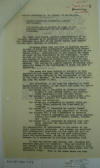
|
6.
August 25, 1931. G-2
Translation of "Sandino
Continues Victorious Against the
Yankees," La Prensa, 25
Aug 1931, Capt. Robert E.
Cummings, Acting Military
Attaché, Mexico City, p. 2.
"Translation. ¶ Article
published in “La Prensa” of Aug.
25, 1931. ¶ SANDINO CONTINUES
VICTORIOUS AGAINST THE YANKEES.
¶ His troops are in control of
eight of the thirteen
Departments of the Republic of
Nicaragua. ¶ Dr. Pedro José
Zepeda, general representative
of the “Ejercito Defensor de la
Soberanía Nacional de
Nicaragua”, has furnished us a
copy of the latest report from
General Augusto César Sandino,
as follows: ¶ “Everyone knows
that our army is fighting
against an army of ferocious
mercenaries, provided with
modern war material and all the
other material resources of the
United States. Nevertheless, we
noe [now] control the camps of
eight of the Departments of our
Nicaragua. We have no city nor
town in our power, because that
is not in our program of
guerrilla warfare, but we will
do that when our army considers
it expedient to engage in field
warfare. Our tactics at present
consist in holding under seige
[siege] the towns of the
Departments in which our army is
operating. ¶ “The enemy has been
talking of scarcity of food
supplies in Las Segovias, but
the scarcity exists in the towns
and cities occupied by the
mercenaries of the army of the
Yankee bankers. In our camps
there is no hunger, - our army
has plenty to eat. ¶ “The
effectives of our army are
composed of eight expeditionary
columns, in the places and under
the orders of the following
chiefs: ¶ Our column No. 6,
commanded by Generals Carlos
Salgado P. and Abraham Rivera,
and successfully operating on
the Atlantic Coast. ¶ Our column
No. 1, commanded by General
Pedro Altamirano, controls the
Departments of Chontalea
[Chontales] and Matagalpa. ¶ Our
column No. 3, commanded by
General Pedro Antonio Irias,
controls the Department of
Jinotepa [Jinotega]. ¶ Our
column No. 7, commanded by
General Ismael Peralta, controls
the Department of Estolí
[Estelí]. ¶ Our columns Nos. 4
and 8, commanded by Generals
Juan Gregorio Colindres and Juan
Pablo Umanzor, control the zones
of Somoto, Ocotal, Quilali and
Jícaro. ¶ Our column No. 5,
commanded by General José León
Díaz, controls the Departments
of León and Chinandega. ¶ Our
headquarters is established in
the centre of the eight
Departments mentioned. Our
columns are mobilized with
mathematical precision, at the
right and left of our
headquarters. Our army is the
best disciplined, loyal and
disinterested, of any in the
whole world, because it is
conscious of its high historical
role. ¶ It does not matter that
Hoover, and cringing and
salaried pens, call us
‘bandits’. Time and history will
tell whether the bandits are in
the White House at Washington,
or in the Nicaraguan Segovias
where human love and fraternity
reign. Even in the cases where
our army . . . "
|
|
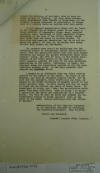
|
7. August 25, 1931.
G-2 Translation of "Sandino
Continues Victorious Against the
Yankees," La Prensa, 25
Aug 1931, Capt. Robert E.
Cummings, Acting Military
Attaché, Mexico City, p. 3.
" . . . orders the shooting of
traitors, this is done because
of love of liberty. And only
these extreme cases are reached
when liberty is threatened, in
the attempt, through ignorance
or perversity, to impose upon us
a slavery which we repulse with
holy wrath. ¶ In our general
headquarters there will be
found, at the disposition of
whoever cares to see them, a
large quantity of documents,
flags, maps, surgical cabinets,
and a multitude of other
important things, belonging to
the Army of the United States,
which were taken from the enemy
in various fights. We have also
had numerous casualties, but we
do not deceive the public, as
they do, by saying that enemy
bullets only pierce our
hat-brims. ¶ The present news
should be sufficient for the
observing public to indignantly
reject false news (reports) from
the enemy, with which they have
been sowing confusion and making
the people drunk, with their
lies. However, today, the 17th
of July, is the fourth
anniversary of our first battle
in the city of Ocotal, Nuevo
[Nueva] Segovia, against the
army of the most grotesque
imperialism in the world.
Yesterday, as today, our
impotent enemy has brandished
against us all its arms,
including calumny which is the
most powerful that cowards can
wield. ¶ I myself am no
different from any other soldier
private of the armies of the
world. My voice is not haughty,
nor does my presence inspire
terror, but we have had the
pleasure, while fulfilling our
duty, of seeing in our midst
thousands of haughty chiefs of
the North American Army. We have
proven how far the power of
right can go against the power
of brute force. My conscience is
clear, and I have the
satisfaction which comes from
duty fulfilled. Even in sleep I
am happy: I sleep with the peace
and tranquility of a healthy
child. Can this be said of those
who control the international
policy of North America? What is
the reply of the human scraps
scattered over the fields of
battle? ¶ Headquarters of the
Ejercito Defensor de la
Soberanía Nacional de Nicaragua,
Las Segovias, Nicaragua. July
16, 1931. ¶ Patria and Libertad,
¶ (signed) Augusto César
Sandino."
|
|
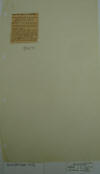
|
8. August 14, 1931.
"Managua Back to Normal,"
New York Times.
"State of Seige Ends in
Nicaraguan Capital—Outlaw
Captured. ¶ MANAGUA,
Nicaragua, Aug. 14.— ¶
The state of seige established
after the earthquake has been
discontinues because Managua
enjoys normal business
conditions. ¶
Colonel Julian C. Smith of the
United States Marine Corps is
now in command of the Nicaraguan
National Guard in the absence of
General Calvin B. Matthews, who
left for the United States today
via Puerto Cabezas and
Bluefields. ¶ Juan
Castillo, second in command of
the outlaw forces of José Leon
Diaz, has been captured near
Somotillo."
|
|
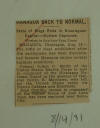
|
9.
August 14, 1931. "Managua
Back to Normal," New York
Times (close-up of above).
|
|
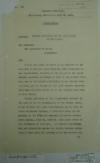
|
10.
July 21, 1931.
Confidential Report on Bandit
Activities on the East Coast of
Nicaragua, Sheridan Talbott, US
Consul, Bluefields, to Sec.
State, Washington D.C., p. 1.
"No. 22. ¶ AMERICAN CONSULATE, ¶
Bluefields, Nicaragua, July 21,
1931. ¶ CONFIDENTIAL ¶ SUBJECT:
BANDIT ACTIVITIES ON THE EAST
COAST OF NICARAGUA. ¶ THE
HONORABLE ¶ THE SECRETARY OF
STATE, ¶ WASHINGTON. ¶ SIR: ¶ I
have the honor to refer to my
telegram to the Legation at
Managua dated July 30, 1931
(repeated to the Department),
relative to the attack on the
small Guardia garrison stationed
at Rama by discharged workmen,
and to the bandit activities in
the Puerto Cabezas area, and to
submit for the Department’s
information more detailed advice
as to the general situation on
this Coast. ¶ Taking advantage
of the opportunity offered by
the arrival of two hydroplanes
of the Marine Corps, which
reached this port from Managua
on the 16th en route to Puerto
Cabezas, I left Bluefields on
the morning of the 17th and
remained in Puerto Cabezas until
Monday, July 20, arriving here
about three in the afternoon of
that day. As Consul Fernald has
not yet officially opened the
Puerto Cabezas consulate I
considered the journey as an
inspection trip ¶ in . . . "
|
|
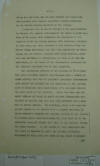
|
11.
July 21, 1931.
Confidential Report on Bandit
Activities on the East Coast of
Nicaragua, Sheridan Talbott, US
Consul, Bluefields, to Sec.
State, Washington D.C., p. 2.
" . . . in my own district, but
he will furnish the Department
and Legation with reports
regarding bandit activities in
the Puerto Cabezas district in
the future. ¶ During my stay in
Puerto Cabezas I had
opportunities to discuss the
general situation in the north
eastern section of Nicaragua
with officials and employees of
the American fruit and lumber
company with extensive holdings
in that area, and with officers
in the American Navy and Marine
Corps (Guardia), all with long
experience in Nicaragua, and the
advice gathered from these
sources, officers and civilians
in Bluefields, as well as my own
observations, is the basis of
the information contained in the
telegram mentioned and in this
despatch. ¶ The commanding
officer of the Guardia in
Bluefields has been receiving
reports from Managua over a
period of weeks stating that one
of Sandino’s principal
lieutenants with around two
hundred men was operating in the
eastern part of Matagalpa with
indications of a movement
towards the east coast of the
country. About ten days ago the
small village of Wauni in north
western Prinzapolka was visited
by bandits and four men were
murdered and a number of stores
looted. In addition, there have
been repeated rumors to the
effect that a general movement
of these marauders towards the
eastern section of the country
was taking place notwithstanding
the fact that it is the
generally accepted theory that
they do not operate during the
rainy season. As the result of
this situation and the fight at
Logtown in April the Guardia
officials stationed in this area
have been on the alert to detect
¶ any . . . "
|
|
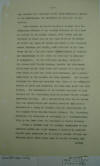
|
12.
July 21, 1931.
Confidential Report on Bandit
Activities on the East Coast of
Nicaragua, Sheridan Talbott, US
Consul, Bluefields, to Sec.
State, Washington D.C., p. 3.
" . . . any evidence of a
movement which might indicate a
threat to the individuals and
interests in this part of the
country. ¶ Upon arrival in
Puerto Cabezas I learned that
the commanding officer of the
Guardia Nacional in that area (a
captain in the Marine Corps),
with twenty men had traveled by
motor boat up the Coco River in
an effort to detect an signs of
bandit movements in the district
around Kisalaya and Saklin, both
situated on the Coco River and
in a district where
concentrations of bandits for
expeditions to the south and
east may be expected to
originate. On the following
morning – July 18 – the planes
left Puerto Cabezas, located the
detachment of Guardia on the
Coco River and learned that they
had been fired on from the shore
near Kisalaya, and a native
lieutenant of the Guardia had
been wounded. The Guardia
returned the fire and reported
that three of the estimated
number of forty men composing
the attacking party had been
killed. The detachment of
Guardia returned to Cape Gracias
and the commanding officer
reached Puerto Cabezas yesterday
morning. In a conversation with
him he stated that his
observations and reports
received indicated a movement of
a group of bandits from the
neighborhood of the Waspook
River towards Puerto Cabezas.
He, therefore, abandoned his
intention of returning on a
reconnaissance trip up the Coco
River and remained in Puerto
Cabezas. ¶ During a journey over
the railway maintained by the
American lumber and fruit
company I visited an isolated
Guardia post commanded by an
American Marine officer and
situated about fifty miles west
of Puerto Cabezas, and ¶ during
. . . "
|
|
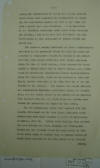
|
13.
July 21, 1931.
Confidential Report on Bandit
Activities on the East Coast of
Nicaragua, Sheridan Talbott, US
Consul, Bluefields, to Sec.
State, Washington D.C., p. 4.
" . . . during our conversation
he stated that he had received
information which suggested the
advisability of visiting the
surrounding country and that he
was going out with a patrol that
same afternoon. As an indication
of the difficult conditions
under which these Americans are
serving, I may state that this
officer is the only white person
in this detachment of twenty
Guardia enlisted men. ¶ The
American company mentioned has
made a considerable reduction in
its personnel within the last
few weeks and a number of rumors
have reached Bluefields to the
effect that they were having
difficulty with former employees
along the line of their railway,
which extends for about eighty
or ninety miles west of Puerto
Cabezas, and, while there is
undoubtedly considerable latent
dissatisfaction among the
unemployed, there was no
evidence of this during my
journey over most of the line
with one of the officials of the
company. The company has ceased
entirely its considerable
lumbering activities during the
present year, and the banana
market in the United States
together with disease affecting
the plantations has greatly
curtailed its production and
export of this fruit. ¶ The two
aeroplanes, after their contact
with the Guardia detachment on
the Coco River, continued their
observation work until ordered
to return to Bluefields on
Monday, July 20. During their
flights, they covered the area
between the Coco, Waspook, and
Prinzapolka Rivers and the
Atlantic Coast and were unable
to discover other signs of
bandits than an unusual number
of small boats anchored in the
Coco River at the town of ¶
Saklin, . . . "
|
|
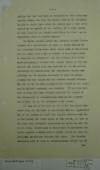
|
14.
July 21, 1931.
Confidential Report on Bandit
Activities on the East Coast of
Nicaragua, Sheridan Talbott, US
Consul, Bluefields, to Sec.
State, Washington D.C., p. 5.
" . . . Saklin, and the fact
that no residents of that town
were visible during the time the
planes were in the vicinity. It
may be stated that while the
planes have a very great effect
on the morale of the bandits, it
is very seldom in this stage of
the bandit activities that they
can be identified when the
planes appear. ¶ On Monday
morning (July 20), reports
reached Puerto Cabezas of a
disturbance in Rama – a small
village on the Kacondido River
about sixty miles west of
Bluefields and the point from
which an attack on Bluefields
might be expected to originate –
and on reaching Bluefields that
afternoon, I learned that around
thirty of the one hundred and
thirty five men employed by the
Nicaraguan Government in
constructing the Rama-Boaco
highway had attacked the 20
Guardia stationed in Rama on
Sunday evening and had killed
one and wounded several others.
The men of the Guardia accounted
for twelve of the workmen in
killed, captured, and wounded.
It appears that this trouble had
been brought about by the action
of the Government in
discontinuing work on the
highway and failing to pay the
laborers their wages. ¶ As Rama
is at the head of the river
transportation route from the
interior to Bluefields and was
apparently one of the points at
which the bandits[‘] efforts
were directed during the April
raids on this coast, as well as
the fact that Sandino’s
lieutenant is operating not far
to the west, caused many in
Bluefields to interpret the
early reports as indicating a
bandit attack on Rama and
possibly an advance towards this
port. The Guardia commander sent
to Rama as reinforcements around
ten of ¶ the . . . "
|
|
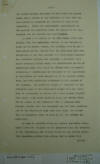
|
15.
July 21, 1931.
Confidential Report on Bandit
Activities on the East Coast of
Nicaragua, Sheridan Talbott, US
Consul, Bluefields, to Sec.
State, Washington D.C., p. 6.
" . . . the thirty Guardia
stationed in Bluefields and
placed under arms a number of
the civilians in this city who
have agreed to undertake its
defense in case of an emergency.
There was considerable
apprehension on the part of the
residents until the nature of
the disturbance and its outcome
had been learned. ¶ As soon as I
arrived in the afternoon, after
consulting with the commanding
officer of the Guardia (a major
in the Marine Corps), and
learning that he and I were
agreed in the opinion that the
situation held possibilities of
not only serving as a recruiting
argument for Sandino’s outlaws,
but creating a precedent that
might encourage others among the
considerable number of
unemployed along this coast to
attempt more successful
outbreaks, I called upon the
Governor of the Department of
Bluefields and made inquiry as
to the general situation, but
with particular reference to the
payment of the workmen. He
showed me copies of telegrams to
the officials (one to the
President) urging that the local
Bank be authorized to advance
the funds (around $2,600) with
which these wages might be paid,
and to-day (July 21) he called
at the Consulate with a telegram
from Managua stating that the
necessary sum had been
transferred to the Bluefields
bank from that city. He stated
that arrangements would be made
to pay the workmen immediately.
¶ As soon as possible after my
arrival yesterday afternoon I
sent the telegram to the
Minister which was repeated to
the Department, not because
there was any urgent situation
demanding action from either,
but in order that ¶ advice . . .
"
|
|
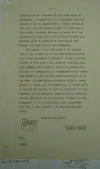
|
16.
July 21, 1931.
Confidential Report on Bandit
Activities on the East Coast of
Nicaragua, Sheridan Talbott, US
Consul, Bluefields, to Sec.
State, Washington D.C., p. 7.
" . . . advice as to the
situation in this area might be
available. I assume that the
suggestion contained therein as
to the desirability of having
planes at both this port and
Puerto Cabezas was acted on, as
the Guardia Commander informed
me to-day that the hydroplanes,
which went back to Puerto
Cabezas this morning, would be
relieved by land planes from
Managua and would return here
to-morrow. ¶ The opinion of the
Commander of the Eastern Area of
the Guardia and my own
observation agree in that there
are probably sufficient forces
at Puerto Cabezas to take care
of any ordinary situation that
might arise, and I think he
accepts my belief that at least
two aeroplanes for
reconnaissance and combat work
should be left on this coast
practically all of the time – if
land planes, at Puerto Cabezas,
where there is a field, and if
hydroplanes, at either port. As
regards Bluefields, it might be
desirable that the garrison here
be increased considerably to
allow for unusual situations in
the immediate vicinity and for
assignment of men to strategic
points throughout this area as
the urgency of the occasion may
require. ¶ Respectfully yours, ¶
Sheridan Talbott, ¶ American
Consul. ¶ 800. ¶ ST/JB."
|
|
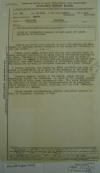
|
17. July 20, 1931.
Naval Intelligence Report of
Information (Secured through
Agent) of Bandit Activities in
Nicaragua, Agent "G", p. 1.
"Sandino has lately been
reported as sick with malaria
and rheumatism but planning
another incursion of his groups
into Chontales in the near
future. ¶ Miguel Angel Ortez,
bandit Jefe who has been
reported dead, is being actually
corroborated as being such by
the bandits although he is
alive. (Verified by Honduran
police) This is done in order to
facilitate his voyage to receive
arms and ammunition via Estero
Real, Amatillo, near Palo
Grande, Province of Chinandega,
Nicaragua. He was identified as
being in Choluteca Honduras, on
6 July, 1931. ¶ Toribio Tijerino
(See report No. 39-31 and 89-30)
has been reported as having
acted as an agent in the
purchase of two boats on the
North Coast of Honduras, for use
of the Nicaraguan bandits. ¶
Socrates Sandino, brother of the
bandit, passed through
Tegucigalpa heading for
Choluteca. An Agent of the
Attaché, unknown to Socrates as
being such, accompanied him.
(The above information was
furnished to Second Brigade
telegraphically on 25 June.) One
Hector Estrada P. Left Corinto,
Nicaragua, for San José,
Guatemala, with mail for Dr.
Zepeda. ¶ Pancho Estrada and
Almendares (Sandino sub-jefes)
reported as being in Choluteca,
Honduras, 6 July. . . . "
|
|
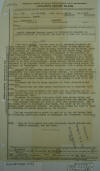
|
18.
July 20, 1931. Naval
Intelligence Report of
Information (Secured through
Agent) of Bandit Activities in
Nicaragua, Agent "G", p. 2.
" . . . José Jesus Zamora,
Sandino Agent in El Salvador,
reported to have arranged, and
sent, the motor boat “Plomo” to
some point unknown whereat the
boat picked up arms, ammunition
and medicine. These were
unloaded at “Indizuelo”, a
landing on the Estero Real,
about 12 July, 1931. Rafael
Rodriguez, the mandador of the
hacienda of Jos Francisco
Valladares Carcache (“Pancho
Valladares C.”) is said to have
handled the shipment ashore.
(Note: Valladares is a strong
Moncadist liberal and he may not
know about Rodriguez who in turn
is known to be very
Anti-American). Perez Estrada
(whose right name is believed to
be Leopoldo Ortiz) a criminal
from Leon hangs around the
vicinity of “Mayocunda”, the
Sanchez hacienda, with a group
of about 14. ¶ Sandino is
recurrently reported as very
sick with malaria and
rheumatism, his right leg being
nearly useless. Is reported as
being desirous of going to
Mexico for treatment but other
bandits fearing he will not
return this time are using all
expedients to detain him. ¶
Sandino’s latest orders issued
to all groups is said to be the
following: ¶ To forage and lay
in large supplies of food,
ammunition and clothing. ¶ To
recruit men and keep large
concentrations in mountain
hide-outs. ¶ To refrain from
attacking any towns for the
present, but to await until
strength is greater so that when
towns are attacked, they will
undoubtedly fall. ¶ To remain in
mountain hide-outs until they
become known, and to ambush
columns when Guardia or Marines
move out towards them. ¶ Two
general Cuartels are said to
have been established. One on
the Olama river in Chontales
near Olama, the other in the Pis
Pis region, exact location
unknown. He plans to attack the
town of Boaco in Chontales to
secure supplies in the future. ¶
The new communication route is
said to be via the Estero Real
in Chinandega proceeding north
to Namasigue and Choluteca,
Honduras. ¶ NOTE: Copy of this
report has been furnished Second
Brigade and Guardia Nacional,
via air mail."
|
|
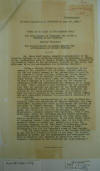
|
19. June 13, 1931.
G-2 Translation of "There Is No
Split In the Sandino Group — The
Rebel Leader of Nicaragua Has
Called a Meeting of His Generals
— Another Offensive — His
Representative in Mexico Refutes
the Affirmation of Colonel
MacDugal," Excelsior,
Mexico City.
"(Translation) ¶ (Article
appearing in EXCELSIOR of June
13, 1931.) ¶ THERE IS NO SPLIT
IN THE SANDINO GROUP ¶ The Rebel
Leader of Nicaragua has called a
Meeting of his Generals ¶
Another Offensive ¶ His
Representative in Mexico Refutes
the Affirmations of Colonel
MacDugal ¶ Dr. Pedro José
Zepeda, general representative
of the Ejercito Defensor de la
Soberania Nacional de Nicaragua,
a propos of the declarations
made by Colonel Douglas
MacDugal, Commander of the
Invading Forces in the
unfortunate Republic of the
south, has delivered to us for
publication, the following
bulletin: ¶ “After a violent
offensive, which culminated in
the taking of the important town
of Ocotal, General Sandino, who
has the direct command of the
column which figured in the
combats of Ciudad Antigua,
Jicaro and Sabana Grande, - has
issued orders to Generals Pedro
Altamirano, Miguel Angel Orhtez
[Ortez], Pedro Antonio Irias,
and Francisco Estrada, to hold a
meeting in a certain place for
the purpose of exchanging views
and coordinating the campaign to
be begun in July. This, because
we are convinced for the
hundredth time that the phrases
and promises of the North
American State Department have
no other end than to disorient
the opinion of the
Latin-American peoples, and
likewise mislead the honest
opinion of the people of the
United States who have
repeatedly condemed [condemned]
the unjustified occupation of
our territory. ¶ “This general
representation of the Army
declares absolutely false the
statements of Colonel MacDugal
[Gen. McDougal], who from
Washington, affirms that there
is dissension and discord in the
ranks of General Sandino.
Colonel MacDugal, incapable of
putting himself at the head of
the troops which he commands,
and which only serve to
assassinate defenceless
Nicaraguans, contents himself
with spreading, from a desk,
false news, which the following
day are proven worthless. ¶
“This general representation of
the Army takes pleasure in
announcing the promotion, to the
next higher grade, of Brigadier
General Pedro Blandon, who, at
the head of a powerful column of
picked men, brought to a close
the brilliant campaign of the
East Coast of Nicaragua, which
culminated with the taking of
Cape “Gracias a Dios”,
Prinzapolea [Prinzapolka], and
all the important towns of that
region. ¶ “In the joint report
rendered to the Supreme Jefatura
by all the high ranking officers
of our Army, the highest
optimism is noted, and the
unquenchable and reiterated
desire to continue this campaign
of sacrifices until the complete
evacuation of our territory has
been obtained.”"
|
|
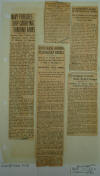
|
20.
May 15-20, 1931. News
clippings: May 15: "Navy
Pursues Ship Carrying Sandino
Arms," Washington Herald.
May 15: "Nicaraguan Guardsmen
Kill 2 Outlaws In Fight,"
Baltimore Sun. May
17: "Hondurans Joining
Nicaraguan Rebels," New York
Times. May 19:
"10 Insurgents Killed In
Nicaraguan Fights," New York
Times. May 20:
"Nicaraguan Guards Raze Rebel
Camps," U.S. Daily.
"NAVY PURSUES SHIP
CARRYING SANDINO ARMS ¶ Gunboat
Seeks Freighter Off Nicaraguan
Coast; Threat Of Rebellion Is
Renewed ¶ MANAGUA, May
14 (U.S.) With new bandit
outbursts threatened, Guardia
Nacional were rushed to the
interior and northern coastal
town by plane late today to
reinforce garrisons. ¶
Meanwhile, dispatches from
Puerta Cabezas [Puerto Cabezas]
stated that the U. S. S.
Asheville, gunboat, steamed
hurridly [hurriedly] out of that
harbor this afternoon to search
for a Scandinavian tramp steamer
said to be en route to a Sandino
rendezvous near Bluefields with
a load of arms for the bandits.
¶ DEPARTURE REPORTED
¶ It was learned authentically
that radios from Washington had
told of the departure of a
Norwegian vessel from a Gulf
port late last night. This ship,
it was stated was bound for a
secluded river in the vicinity
of Bluefields, where it is to
deliver a considerable quantity
of ammunition, machine guns, and
rifles. ¶ The reinforcement of
interior and coastal garrisons
came late today, after vigorous
demands on the part of the
Standard Fruit and Steamship
Company, which has vast holdings
in both sections. This company,
it is understood, advised
authorities here that new bandit
attacks are inevitable and that
the present garrison strength is
not sufficient. ¶ TO PAY
TROOPS ¶ The central
government, it is understood,
replied that it is unable to
send troops because of lack of
funds to pay them and support
them, at which the Standard
Fruit and Steamship Company
agreed to pay the men and
support them, if the government
would permit their use. The
authorities consented to this
plan, it is learned, on
condition that the Fruit Company
would provide the
transportation. ¶ Attempts to
move the reinforcements by means
of the Pan-American Airways
failed, it is learned, when that
company refused to move the
troops on the ground that there
were not adequate landing
facilities at various garrisons.
¶ The fruit company eventually
was able to charter sufficient
planes to make the movements
this afternoon, and it is
thought that at least 50 men can
be rushed into the most needed
positions by noon tomorrow. ¶
Nicaraguan Guardsmen
Kill 2 Outlaws In Fight ¶
Virginian Commands Patrol Which
Had Skirmish With Group In
Jinotga [Jinotega] ¶
Managua, Nicaragua, May 14
(AP)—A National Guard patrol, in
command of Capt. L. B. Puller
and Lieut. W. A. Lee, engaged in
a skirmish with a group of
outlaws today near the junction
of the Gusanera and the Cua
rivers in the province of
Jinotga [Jinotega], killing two
of them. ¶ The outlaws were
coming up the river Cua in
canoes on a foraging expedition
from their main camp when the
fight occurred. The National
Guard detachment located the
camp two hours later, but the
main force had decamped.
Firearms, ammunition and
machetes were captured. Captain
Puller is a Virginian and
Lieutenant Lee is from Texas. ¶
HONDURANS JOINING
NICARAGUAN REBELS ¶ Several of
Former Noted in Band Routed by
National Guard in Fight at
Palacaguina. ¶ INSURGENTS WELL
ARMED ¶ Use Machine Guns and
Rifle and Hand Grenades—Several
Casualties, All Among the
Irregulars. ¶ Special
to The New York Times. ¶
WASHINGTON, May 16.—Men
appearing to be Hondurans were
observed in a force of 100
well-armed rebels who clashed
with the Nicaraguan National
Guard for more than two hours
early yesterday morning at the
town of Palacaguima
[Palacaguina], twenty-five miles
south of Ocotal in the northwest
part of Nicaragua, according to
a report received by the Navy
Department today from Colonel
Franklin G. Garrett, commander
of the Second Brigade of marines
in Nicaragua. ¶ There were
several rebel casualties, but
none among the Guard. The
rebels, many of whom were
disguised as guardsmen, were
repulsed. Marine planes followed
up the pursuit. ¶ The presence
of Hondurans would come as no
surprise, inasmuch as on
previous occasions it has ben
[been] understood that
irregulars from the country have
participated in outlaw
depradations [depredations] in
Nicaragua, while Honduras is at
present in a period of unrest
consequent upon an attempt at
revolution. The attack was the
first made in force in the
bandit stronghold of
Northwestern Nicaragua since
Augustino Sandino and his
chieftains recently retired from
the east coast after sorties
there. ¶ “Palaoaguima
[Palacaguina],” Colonel Garrett
reported, “attacked at 1:55 A.
M. May 15 by Ortez, Blas
Gonzalez and 100 bandits, using
machine guns, rifle and hand
grenades and rifles. Attack
lasted until 4:15 A. M. Many
houses damaged by bombs and
rifle fire. Bandits dressed in
Guardia clothing, red and black
emblems. Three Jefes present and
men in khaki believed to be
Hondurans. Two stores looted to
amount of about $1,000. Bandit
casualties estimated at several
killed and wounded. No Guardia
casualties. Patrols cleared in
pursuit and planes made
reconnaisance [reconnaissance]
about 11 A. M., without result.”
¶ Although revolutionary
activities have apparently
subsided on the north coast of
Honduras on the Atlantic side,
the State Department announced
today that a consulate would be
opened at Puerto Cortes for the
purpose of transmitting
information. Most American
interests in Honduras,
consisting primarily of fruit
plantations, are located in that
region. ¶ 10 INSURGENTS
KILLED IN NICARAGUAN FIGHTS ¶
Two of National Guard
Wounded—Admiral Smith Reports
Honduran Coast Quiet. ¶
Special to The New York Times. ¶
WASHINGTON, May 18.—Additional
rebel activity in Western and
Central Nicaragua, which has
resulted in the death of ten
bandits and the wounding of two
of the National Guards, was
reported to the Navy Department
today by Colonel Franklin B.
Garrett, commander of the Second
Brigade of Marines at Managua.
Guard patrols, led by marine
officers, repulsed the bandits.
¶ The report was supplemental to
one received from Colonel
Garrett on Saturday, telling of
an attack by 100 well-armed
rebels at Palacaguima
[Palacaguina] in the same region
on Friday. The insurgents were
dispersed at that time in a
fight of more than two hours. ¶
The contacts involved patrols
led by Captain John C. McQueen
and Lieutenants Mark H. Bell,
Harry D. Hutchcroft, Harry E.
Kip and C. A. Brown. One of the
insurgent bands was that of José
Leon. The clashes occurred at
Joconuco [Jocomico] and Rio
Grande. ¶ Rear Admiral Arthur
St. C. Smith, commander of the
Special Service Squadron,
reported today that conditions
were quiet along the east coast
of Nicaragua. The gunboat
Asheville is at Puerto Cabezas.
¶ Nicaraguan Guards Raze
Rebel Camps ¶ Fatalities in
Three Days of Fighting Number 15
¶ Bringing the total
insurrectionists killed in three
days to 15, patrols of the
Nicaraguan Guardia Nacional
destroyed two bandit camps in
northwest Nicaragua May 16, the
Department of the Navy announced
May 19. Two contacts in which 10
insurrectionists were killed
occurred May 13 and 15 as
guerrilla warfare was renewed.
The announcement follows in full
text: ¶ Five Nicaraguan bandits
were killed and two bandit camps
15 miles east of Ocotal,
northwestern Nicaragua, were
destroyed in two contacts with
Guardia patrols on May 16,
according to dispatch received
today in the Navy Department
from Col. Franklin B. Garrett,
U. S. M. C., commanding the
Second Brigade of Marines in
Nicaragua. ¶ In the first
contact, a Guardia patrol from
Palacaguina under Second Lt.
James O. Brauer, U. S. M. C., of
Fargo, N. Dak., and Sergt. Harry
E. Kipp, U. S. M. C., of
Winnebago, Minn., met a group of
12 bandits under the leader
Ortez. Although there were no
known casualties, the bandit
camp was destroyed. ¶ A Guardia
patrol under Corp. Ross A.
Trosper, U. S. M. C., of Albion,
Nebr., later had contact with a
small group of bandits in the
same vicinity. Five bandits are
known to have been killed and
their camp destroyed. There were
no Guardia casualties."
|
|
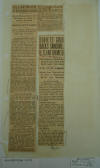
|
21. May 1, 1931.
News clippings: "Kills Sandino
Aide In Nicaragua Clash,"
New York Times.
"Soviets' Gold Backs Sandino,
U.S. Informed," New York
Americas.
"KILLS SANDINO AIDE IN
NICARAGUA CLASH ¶ Guardia
Nacional Reports Two Skirmishes
in Vicinity of Ocotal, in
Northwest. ¶ MANAGUA LOOTING
CHARGED ¶ Mexican Professor
Makes Accusation, but Washington
Denies It—Battle Near in
Honduras. ¶ Special to
The New York Times. ¶
WASHINGTON, April 30.—Two
skirmishes between the Guardia
National of Nicaragua and
outlaws, in one of which
Chavarria, one of General
Sandino’s chief lieutenants was
killed, were reported to the
Navy Department today by marine
headquarters at Managua.
Lieutenant Donald Leroy
Truesdale of Lugoff, S. C., a
corporal in the Marine Corps,
was in command of the Guardia
patrol, which sustained no
casualties. ¶ The patrol pursued
on Monday a group of outlaws who
were attacking a farm west of
Condega, twelve miles south of
Ocotal, and caught up with them
at Aguacatel, eighteen miles
southwest of Ocotal. They fired
at the outlaws, who escaped in
the brush, and captured eleven
animals, clothes and blankets.
The next day the patrol made
contact with another band near
Las Oucillas, seventeen miles
south of Ocotal, and killed
Chavarria. Ten outlaws were
wounded. ¶ Coincidentally with
this report came one to the
State Department from Matthew E.
Hanna, the United States
Minister, stating that the
program of withdrawing marines
from Nicaragua was proceeding on
schedule and that only twenty
marines remained in the
northwestern area, where the
principal outlaw operations have
been conducted. As the marines
have been withdrawn their places
have been taken by Guardsmen. ¶
Guard Gets 450 Recruits.
¶ That force has recruited more
than 450 of the 500 men planned
when the United States decided
to withdraw. ¶ With only twenty
Marines remaining near Ocotal,
100 have been withdrawn from the
central area to Managua and the
rest in that area, numbering
125, will be withdrawn by the
middle of May. The Guardia has
replaced these reserves and now
numbers 1,400 enlisted men in
the northern and central areas
and soon will be increased to
1,500. ¶ Charges by Lombardo
Toledano, a professor at the
National University in Mexico
City, who recently visited
Managua, that Marines had sacked
Managua after the earthquake,
had dynamited safes, and killed
persons attempting to enter the
ruins of their homes, were de-
[fold in paper - 'detained'] -ed
here today. The charges were
contained in an interview in
Universal in Mexico City. ¶
Adams Contradicts
Charge. ¶ “I have no
reason to believe,” Secretary of
the Navy Adams said, “that the
Marines in Nicaragua have
carried on their relief work at
Hanagua [Managua] in any manner
except deserving of the highest
commendation. Reports from the
President of Nicaragua, the
American Minister at Managua and
the Red Cross director of relief
at Managua indicate that the
relief activities carried on by
the Marine Corps and the naval
personnel stationed or sent
there, were carried out
speedily, efficiently, in an
orderly manner and most
certainly without violence.” ¶
Ernest J. Swift, who returned
here yesterday after directing
Red Cross relief activities at
Managua, said the marines
committed no excesses and did a
splendid job. ¶ The State
Department said its reports
showed that discipline was
maintained and that only two
looters were shot. ¶ A clue to
Señor Toledano’s charges was
seen in a report received by the
War Department today from Lieut.
Col. Dan I. Sultan, the officer
in charge of the Nicaraguan
canal survey. ¶ “Safes and
vaults damaged by the fire,” he
said, “were opened upon the
request of the owners, provided
they were public or semi-public
officials. These consisted of
the safe in the British
Legation, one safe and a vault
in the Anglo-South American Bank
and a safe in the office of the
Collector of Cuctoms [Customs].”
¶ SOVIETS’ GOLD BACKS
SANDINO, U. S. INFORMED ¶ State
Department Witness Declares He
Saw Checks Sent Bandit Leader
from Russia ¶ TOTAL PUT AT
$1,000,000 ¶ Stimson Says There
Will Be No Delay in Withdrawing
Marines from Nicaragua
¶ By FULTON LEWIS, ¶ Universal
Service Staff Correspondent. ¶
WASHINGTON, April 30.—Evidence
that bandit activities in
Honduras and Nicaragua are being
financed by Communist agents of
Soviet Russia was placed before
the State Department today. ¶
Dr. Pedro Munoz, of Costa Rica,
who knew General Sandino, rebel
leader, in Mexico City prior to
the recent outbreak, presented
the evidence. ¶
$1,000,000 PROVIDED. ¶
The Russian Government, Dr.
Munoz estimated, has furnished
about $1,000,000 to back
activities that have cost lives
of numerous American marines and
private citizens. The gold was
sent to the bandit leader in
Bluefields, Nicaragua, through a
round-about route, Dr. Munoz
charges. ¶ The Russian Embassy
in Paris, Dr. Munoz declared,
has been sending money to an
agent in Cartagena, Colombia,
who in turn, has been forwarding
it to a second agent in
Bluefields, who has been making
frequent contracts with Sandino.
¶ SAW CHECKS. ¶
While he was in Mexico City, Dr.
Munoz said, Sandino showed him
checks for $10,000 to $25,000
from Communist sources, together
with numerous papers and
documents concerning plans for
revolutionary activities. At
that time Dr. Munoz declared,
Sandino was receiving the
Communist funds through Pedro
Zapata, his representative in
Mexico City."
|
|
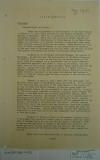
|
22.
May 22, 1931. G-2 Report
on Renewed Bandit Activities in
Nicaragua (no author indicated),
p. 1.
"L A T I N A M E R I C A ¶
Nicaragua: ¶ Renewed Bandit
Activities - ¶ After the
announcement by the Government
of the United States on February
13, 1931, which provided for the
gradual withdrawal of the
Marines in Nicaragua, there was
no immediate reaction on the
part of the Sandino bandits.
There were some encounters
between Guardia and bandit
detachments in the Province of
Nueva Segovia in northwest
Nicaragua, but they were of no
greater frequency or importance
than those which formerly
occurred during the dry season.
Nueva Segovia has long been the
bandit stronghold because of its
accessibility to Honduras, to
the east coast of Nicaragua via
the Coco River, and because its
pathless jungles and mountainous
terrain furnish man hiding
places. ¶ On March 31 an
earthquake destroyed Managua,
the capital of Nicaragua. As
this was also the headquarters
of the Marine Corps and the
Guardia Civil, as well as the
base for the marine aviation,
all local units were engaged for
a considerable time in relief
measures. All available
personnel was needed to clear up
the debris, bury the dead, care
for the injured, repair the
water supply system and feed the
natives. During this time there
were rumors of a bandit attack
on Managua by Sandino, but
shortly thereafter Zepeda,
Sandino’s publicity agent in
Mexico, announced in the press
that Sandino had declared a
truce, so that all energy might
be used to assist in the
recovery from the catastrophe. ¶
However, on April 6, just a week
after the earthquake, the Big
Falls power plant of the Neptune
mines was blown up. It is
located about 100 miles east and
south of the usual haunts of the
bandits and is only 85 miles
from Puerto Cabezas, on the east
coast where the Bragman Lumber
Company has an investment of
some $13,000,000. On April 11,
the bandits were reported at
Logtown, a Bragman Lumber
Company settlement on the Wawa
River some 35 miles from Puerto
Cabezas, where eight American
civilians, two British citizens
and an unknown number of
Nicaraguans were killed. The
leader of the Guardia patrol,
Captain Harlan Pefley, Marine
Corps noncommissioned officer
commissioned in the Guardia, was
killed in an attack upon the
rebels. Official reports stated
that one of the bandits who was
killed was identified as Pedro
Blandon, one of Sandino’s chief
lieutenants, but Zepeda has
since denied this in the press.
United States naval vessels were
immediately despatched to east
coast ports but ship commanders
were instructed not to send men
inland. ¶ On April 15 Gracias a
Dios, in the extreme northeast
corner of Nicaragua, was looted
by a small group of bandits
under the leadership of Abraham
Rivera who was reported by
Zepeda in September, 1930, as
having been appointed in charge
of the River Coco district. No
deaths are known to have
resulted from the raid but the
town was thoroughly looted and
the Tropical Fruit Company’s
radio station destroyed. ¶ Since
that date there have been no
attacks, although Pedro . . . "
|
|
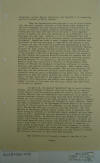
|
23.
May 22, 1931. G-2 Report
on Renewed Bandit Activities in
Nicaragua (no author indicated),
p. 2.
" . . . Altamirano, another
Sandino lieutenant, was reported
to be assembling men for an
attack on Puerto Cabezas. ¶ When
the depredations were reported
it was at first assumed that
they were sporadic outbursts of
disaffected labor elements who
had been discharged from the
various industries of the
district on account of the poor
economic situation in Nicaragua;
but it was soon established that
they were the work of the more
or less organized bodies of
bandits who have been operating
in the northwestern area of
Nicaragua for some time.
However, it is not established
that this outbreak may be
dignified as an offensive
against the present Moncada
Government. Zepeda has tried to
make it appear that the murders
were incidental to the
requisitioning of supplies by
the bandits in lieu of taxes;
and that the attack at Logtown
was precipitated by the request
of inhabitants of that place for
armed help from Puerto Cabezas.
On April 18, 1931, Zepeda
announced in Mexico City that
Sandino was fighting to clear
Nicaragua of all foreign troops,
that the purpose of the presence
of Marines in Nicaragua did not
affect the situation, and that
Sandino had promised President
Moncada his support when the
Nicaraguan Government follows a
nationalist policy and works
without American Marines for its
protection. He has since
declared that Sandino would also
insist upon a revision of the
Nicaraguan Canal Treaty of 1914
and the abrogation of American
influence in customs, railroad,
and banking activities in
Nicaragua. While Zepeda claims
to speak for Sandino it is very
probable that his pronouncements
are made upon his own initiative
and have little relation to the
exact situation which may exist
in Nicaragua at any given time.
One opinion expressed is that
the bandit outbreak was similar
to that of previous years, and
was occasioned by the approach
of the rainy season; according
to this observation the bandits
were engaged in laying in a
supply of stores to last them
over the rainy season when they
would not be able to operate. ¶
On April 13, the gunboat
“Asheville” was en route to
Puerto Cabezas, but according to
plans at that time it was not to
land any forces unless a serious
situation should be found to
exist; subsequently, Marines
from the “Asheville” were
authorized to go ashore to
protect American citizens and
during the 13th about 25 Marines
were landed but soon returned to
the ship, prepared to land again
if needed. Previous to this
Puerto Cabezas was defended by
civil outposts. There had been a
detachment of the Nicaraguan
National Guard of 43 officers
and men at the port prior to the
outbreak, but all except one
officer and a few men had been
sent on patrols into the
interior. The only Marines in
the Puerto Cabezas region,
except those on warships, were
those acting as officers of the
National Guard, probably not
more than three or four.
Bluefields was also protected by
a force of the Nicaraguan
National Guard. An American
force was landed at Bluefields
to insure order during the
absence of the Guard on patrol.
On April 14, additional American
naval vessels were diverted to
the Nicaraguan east coast, with
orders to limit their defensive
efforts to seaports, to offer
asylum to Americans, and to use
all force necessary to protect
life and property in the ports
under guard. The commanders,
however, were warned not to
extend their operations into the
interior or beyond the limits of
the towns to which they were
assigned. ¶ The outbreak has not
caused a change in the plan of
the . . . "
|
|
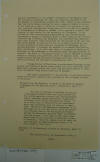
|
24.
May 22, 1931. G-2 Report
on Renewed Bandit Activities in
Nicaragua (no author indicated),
p. 3.
" . . . American Government for
the gradual withdrawal of the
Marines which was announced on
February 13, 1931, and which was
described in the G-2 Summary of
Intelligence of March 27, 1931.
While it was indicated that the
United States intended to retain
complete liberty of action at
all times as to what it should
do to protect its nationals it
was also indicated that American
troops were not to be used in a
campaign of extermination of
Sandino’s outlaws, nor to
garrison or police the interior
of the country for the
protection of foreigners. It was
pointed out that concentrating
responsibility upon the
Nicaraguan Government to employ
its National Guard in this
situation was the most effective
way of meeting the emergency,
and confidence was expressed
that other countries would
eventually see the problem in
the same way. The United States,
it was pointed out, is as much
concerned as ever in the
protection of Americans and
foreigners in Nicaragua, and in
warning Americans to evacuate
the interior it is merely
facilitating their protection.
It is felt that there is no
menace to Americans in Nicaragua
in the withdrawal of the Marines
under the plan recently
announced. The Guard is
furnishing protection and is
regarded as strong enough to
continue such protection after
the Marines leave. Better
communications through the
bandit-infested territory, now
in prospect, should materially
aid the Guard in maintaining
order. ¶ Transportation
difficulties in northeastern
Nicaragua necessitated the
sending of Marine Corps planes
into that territory; three
additional transport planes were
sent from the United States to
reinforce the Marine Corps
Aviation Section at Managua. ¶
The formal announcement of the
attitude of the United States
toward the current situation was
contained in the following
releases to the press: ¶
Telegram from the Secretary of
State to the American Legation
at Managua and the American
Consul at Bluefields, April 17,
1931: ¶ “In view of outbreak of
banditry in portions of
Nicaragua hitherto free from
such violence you will advise
American citizens that this
Government cannot undertake
general protection of Americans
throughout that country with
American forces. To do so would
lead to difficulties and
commitments which this
Government does not propose to
undertake. Therefore, the
Department recommends to all
Americans who do not feel secure
under the protection afforded
them by the Nicaraguan
Government through the
Nicaraguan National Guard to
withdraw from the country, or at
least to the coast towns whence
they can be protected or
evacuated in case of necessity.
Those who remain do so at their
own risk and must not expect
American forces to be sent
inland to their aid.” ¶
Statement of the Secretary of
State to the press, April 18,
1931: ¶ “The problem before the
Government to-day is . . . "
|
|
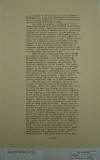
|
25.
May 22, 1931. G-2 Report
on Renewed Bandit Activities in
Nicaragua (no author indicated),
p. 4.
" . . . not a problem of the
protection of its citizens in
Nicaragua from a war, but from
murder and assassination. In
that respect it is totally
different from the problem which
existed in 1926. ¶ “In 1926, two
armies, consisting of two or
three thousand men each, were
fighting in Nicaragua on the
east coast. Both armies
professed to be carrying out the
rules of warfare and to be
protecting neutrals and neutral
property. So the problem of this
Government was solved by
establishing neutral zones in
which, by agreement with both
armies at that time, hostilities
did not enter. These neutral
zones, as I recall it, were
established with the consent of
both the Liberal and
Conservative commanders of the
contending armies. There was no
organized attempt to murder
private citizens of any country.
The problem was only to protect
them from the inevitable
catastrophes of war. ¶ “Now we
have a situation where small
groups of confessed outlaws --
treated as outlaws by the
Nicaraguan Government -- are
making their way through the
jungle to the east coast, with
the avowed intention of
murdering and pillaging the
civilian inhabitants of the
country. The terrain where this
is taking place is one of the
thickest jungles in the world.
The rainfall on the east coast
of Nicaragua is something more
than double the rainfall on the
west coast and as a result this
is very thick jungle country, a
region where it would be almost
impossible for regular troops to
operate effectively even if it
were attempted. ¶ “Another point
of difference which is vital is
that in 1926 there was no
Nicaraguan Constabulary. Since
that time, for nearly four
years, our officers have been
helping the Nicaraguan
Government train a force of
Constabulary especially for
fighting in this kind of
terrain, the very object being
to produce the most appropriate
kind of force to meet tropical
and jungle conditions of
warfare. That force has been
recently raised from 1,850 to
over 2,100 and is reported by
its officers as being highly
efficient. Purely from the
standpoint of protection the
most effective way to protect
the American and foreign
civilians who have been suddenly
exposed to this danger in the
forests of eastern Nicaragua is
to give them warning of the
danger and an opportunity to
escape to the protection of the
coast towns; and then for this
specially trained Constabulary
to operate in the jungle against
the bandits. If the number of
Constabulary now on the east
coast is not sufficient for that
purpose, there are certainly
enough elsewhere to reinforce
them against these comparatively
small bands of outlaws. American
naval vessels are standing by at
all the threatened east coast
ports with orders to pro- . . .
"
|
|
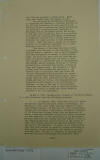
|
26.
May 22, 1931. G-2 Report
on Renewed Bandit Activities in
Nicaragua (no author indicated),
p. 5.
" . . . [pro]tect life and
property at these ports. These
ships will remain until the
danger is over. ¶ “By assisting
the Government of Nicaragua in
organizing and training a
competent guardia, we are not
only furnishing the most
practical and effective method
of meeting the bandit problem
and the protection of Americans
and foreigners in Nicaragua from
its attendant perils, but we are
at the same time recognizing
that it is a problem with which
the sovereign Government of
Nicaragua is primarily concerned
and a problem which it is
primarily the right and duty of
that Government to solve. There
has been no change in the
determination of the American
Government not to send American
troops into the interior. ¶ “The
events of this last week have
pretty thoroughly torn the mask
off the character of the
mythical patriot, Sandino. Two
of his lieutenants have been
recognized as leaders of these
outlaw bands, and both from
their work and from the evidence
of captured papers they are
shown to have been engaged in a
deliberate plan of assassination
and pillage against helpless
civilians of various
nationalities, including
Nicaraguans, working in mines
and logging camps. The movements
of these outlaws from the
northwestern provinces to the
eastern coast of Nicaragua came
just after the terrific
earthquake which prostrated the
center of that country, when
every humane impulse was to
assist those who were suffering
from the catastrophe and when
all forces, including Marines
and Constabulary were engaged in
the alleviation of distress. It
was in the hour of his country’s
desolation that Sandino chose to
send his outlaws across the
country to attack the region
which he believed to be left
unguarded.” ¶ On May 9, 1931,
the Secretary of State of the
United States in a radio
broadcast made the following
statement: ¶ “. . . In January,
1929, there were over five
thousand American marines and
naval forces in Nicaragua. By
February 1, 1931, that number
had been reduced to less than
fifteen hundred. On February 13,
after consultation between the
Government of Nicaragua, the
Marine Commander of the
Nicaraguan National Guard, and
the Secretary of State, a plan
was announced and put into
effect providing for the
completion of the instruction of
the Nicaraguan National Guard
and the orderly and safe removal
of all of the remaining American
training forces by the autumn of
1932, thus finally removing all
American soldiers from the soil
of that Republic. In spite of
the difficulties that have been
and may be caused by outlaw
activities in that country, we
are proceeding, and intend to
proceed, with this plan. We have
no intention of removing from
American citizens in Nicaragua
the protection which . . . "
|
|
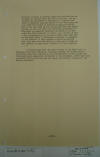
|
27.
May 22, 1931. G-2 Report
on Renewed Bandit Activities in
Nicaragua (no author indicated),
p. 6.
" . . . American citizens in
foreign lands are entitled and
accustomed to receive under the
law of nations. By assisting the
Government of Nicaragua to
organize and train a competent
national guard, we are
furnishing the most effective
method of protection against
bandits, and at the same time we
are recognizing that the bandit
problem is one with which the
sovereign government of
Nicaragua is primarily concerned
and which it is her right and
duty primarily to solve. As a
matter of fact a fair
consideration of the facts makes
clear that the new National
Guard of Nicaragua is giving to
strangers in the interior of
that country a better protection
than they have ever had before
or than can be found in the
interior of many other countries
of that locality. . . .” ¶ At
the present time the naval
forces on the east coast of
Nicaragua have been reduced to
one small vessel; no further
bandit activities have been
reported in the eastern part of
the country and the bandits have
apparently withdrawn to the
northwest, where they have
continued their activities and
are being successfully opposed
by the Guardia Nacional."
|
|
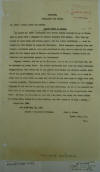
|
28. May 18, 1931.
G-2 Report on Doctor Pedro J.
Zepeda, Lt. Col. Fred T. Cruse,
Military Attaché, San José.
"NICARAGUA ¶ POPULATION AND
SOCIAL ¶ No. 2700 – Public Order
and Safety. ¶ Doctor Pedro J.
Zepeda. ¶ In report No. 1147 I
mentioned that Doctor Zepeda
intended to go to Nicaragua by
plane with a shipment of medical
supplies from Mexico. This item
appeared in Costa Rican and
Panama papers, and was stated
definitely - - that Dr. Zepeda
had left Mexico by plane for
Nicaragua. These newspaper
reports also contained a
statement said to have been
published by him, that in view
of the earthquake and the urgent
need of Marines and Guardia in
Managua, Sandino would not
undertake any operations against
the Government. ¶ Zepeda,
however, did not go to
Nicaragua, and as far as I can
find out, has no intention of
going there. His recent
statements have been the usual
fantastic exaggerations, the
latest one to the effect that
Russia had offered Sandino
$100,000.00 and 5,000 rifles,
which offer had been turned
down. There is no need to state
that no such offer was made and
that if it had been made it
would have been accepted
promptly. Information from a
number of reliable sources is
that Toribio Tijerino is the man
who is getting arms into
Nicaragua, and it is the general
belief that he is furnishing
them both to the bandits and to
the Conservative leaders.
However, no one seems to have
any idea where the money for
these rifles is coming from,
unless it is from Mexico, and
this seems to be only a guess. ¶
Report No. 1223 ¶ San José--May
18, 1931 ¶ Source – Personal
knowledge. ¶ Fred T. Cruse, ¶
Lieut. Col., F.A. ¶ M.A."
|
|
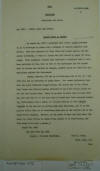
|
29. May 18, 1931.
G-2 Report on Doctor Pedro J.
Zepeda, Lt. Col. Fred T. Cruse,
Military Attaché, San José
(copy).
"COPY ¶ G-2/2657-P-405 ¶ 2 ¶
NICARAGUA ¶ POPULATION AND
SOCIAL ¶ No. 2700 – Public Order
and Safety. ¶ Doctor Pedro J.
Zepeda. ¶ In report No. 1147 I
mentioned that Doctor Zepeda
intended to go to Nicaragua by
plane with a shipment of medical
supplies from Mexico. This item
appeared in Costa Rican and
Panama papers, and was stated
definitely -- that Dr. Zepeda
had left Mexico by plane for
Nicaragua. These newspaper
reports also contained a
statement said to have been
published by him, that in view
of the earthquake and the urgent
need of Marines and Guardia in
Managua, Sandino would not
undertake any operations against
the Government. ¶ Zepeda,
however, did not go to
Nicaragua, and as far as I can
find out, has no intention of
going there. His recent
statements have been the usual
fantastic exaggerations, the
latest one to the effect that
Russia had offered Sandino
$100,000.00 and 5,000 rifles,
which offer had been turned
down. There is no need to state
that no such offer was made and
that if it had been made it
would have been accepted
promptly. Information from a
number of reliable sources is
that Toribio Tijerino is the man
who is getting arms into
Nicaragua, and it is the general
belief that he is furnishing
them both to the bandits and to
the Conservative leaders.
However, no one seems to have
any idea where the money for
these rifles is coming from,
unless it is from Mexico, and
this seems to be only a guess. ¶
Report No. 1223 ¶ San Jose--May
18, 1931 ¶ Source – Personal
knowledge. ¶ Fred T. Cruse, ¶
Lieut. Col., F.A. ¶ M.A."
|
|
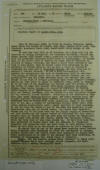
|
30. May 13, 1931.
Naval Intelligence Personal
Report on Ramiro Molla Sanz,
from Agent "G", Tegucigalpa.
"Born 28 February, 1885, in
Villa de Canals, Valencia,
Spain, about sixty six inches of
height, blue eyes, medium brown
hair, high forehead, prominent
roman nose, small mouth which
droops at the corners. ¶
He left New York City on 26
December, on a trip with the
intentions of hiking through all
the republics of North, Central
and South America with Buenos
Aires, Argentina as his
destination. To date his
pedometer registers 5,500 miles
to Tegucigalpa. He stated that
in the latter part of January or
early part of February he
arrived at Danli, Honduras, and
spent a short time working on
the road in that place, then he
headed south into Nicaragua to
the northwest of Ocotal where he
met up with a group of Sandino's
followers who were led by
Francisco Estrada and they took
him to Sandino's Cuartel
General. He had a long
conversation with Sandino who
autographed his book of
signatures which he carries.
¶ "The coming of Ramiro
Molla Sanz to our Cuartel
General was not accidental --"
was the first sentence which was
written then continued to say
that he brought greetings from
their Hispano brothers.
During the time which he spent
in Sandino's camp, which he
explained to the best of his
knowledge was located near the
source of the Cua river, he came
into contact with Pedro Blandon,
Alejandro Rivera, Juan Santos
Morales who signed as secretary
to General Pedro Blandon First
Expeditionary General and
Commander of Column #12, and
General Carracas, whom he stated
is a new Brigadier General who
has recently joined Sandino.
According to his observations
they have four heavy Browning
machine guns, two Lewis machine
guns, two Vickers aircraft
machine guns, various B.A.R.s or
Thompsons, as he described them
as rifles with large ammunition
clips on the lower side of the
gun, a number of Springfield
rifles, model 1912, with rifle
grenade dischargers, also a
small quantity of hand grenades.
He did not know the names of any
of the arms but according to his
description they are as listed
above. He stated that
Blandon's column had all of the
good arms and the larger supply
of ammunition and that Rivera
had the larger number of
followers but they were a
rougher class of indian and had
poor arms and hardly no
ammunition, being armed with
mostly old Concon, Infume and
Remington rifles, which had from
time to time been picked up.
He went with them when they
proceeded to Poteca where they
all embarked in "pipantes"
(dugouts) and proceeded down the
Coco River to Cabo Gracias Adios
where he left them as he was
afraid to continue in their
company. ¶ He stated
that no one in the group knew
anything about Marines being
withdrawn from Nicaragua or
about the earthquake in Managua,
further stated that the bandit
jefes were unanimous in saying
they would immediately go to
work if the Marines were once
withdrawn. He returned to
Tegucigalpa via: North Coast of
Honduras. ¶ NOTE:
All the bandits called Molla
"brother" in their
autobiographic addenda which
were strongly Iberro Hispanic,
and anti-American with a strong
Communistic trend. ..."
[NOTE: For further
information on this episode with
Ramiro Molla Sáenz, see
TOP
100, PAGE 66]
|
|
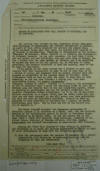
|
31. May 7, 1931.
Naval Intelligence Report on
Object of Nicaraguan Good Will
Mission to Guatemala and El
Salvador, from Agent "G,"
Tegucigalpa, p. 1.
"Two letters were brought by
Mrs. Magdalena Ibarra Villalobo
from Nicaragua to Tegucigalpa
for further transmittal to
Sandino. An agent of this office
acquired the letters and copied
them. Their contents being what
they were, the letters were
allowed to go through to
destination. Following is
translation of the letters:
“Managua, 23 December, 1930.-
General A. C. Sandino, His
Encampment, My Esteemed General:
As you will remember, the last
time I wrote you was before you
had definitely arranged your
trip to Mexico, today I talked
with the same friends of
Antonio, and I am satisfied to
inform you that we are all
agreed, as, in addition to being
patriotic, the present situation
is hard and painful, more so for
us than for any other. ¶ “I am
agreed in the other matter but I
believe it more convenient that
this insinuation be made by you
in some way, or by a friend of
yours, and remember that we
accept, because what you propose
is preferible [preferable] to
the present order of affairs.
Tacho (Anastacio) told me that
he gave the order to Leon that
he send something to you and
your friends. I salute you, Your
most afectionate [affectionate]
friend, (s) Andres Largespada.”
¶ “Managua, January 3, 1931.-
General A. C. Sandino, His
encampment, Do not be surprised
that I write the following based
on what the friends say, and
believe that we are all
completely agreed, frankly
anything is prefereable
[preferable] and not the present
condition, the (patria)
fatherland before everything. As
it is now we can never elevate
ourselves to a higher level, and
the whole world will see that
you are done justice, as you
will prove your ture [true?]
patriotism, and that you have no
individual ambition. Proceed as
soon as possible as this
situation is terrible and I
repeat, we prefer everything,
less this. Say in what and how
we can assist you. (s) M.
Barreto P.” ¶ The Naval Attaché
attended the inaugural
ceremonies of President Araujo
in El Salvador on 1 March, 1931,
and the official opening of the
Presidential period of office of
President Ubico in Guatemala on
15 March, 1931. At the two
places and at the same times a
“Good Will Mission” from
Nicaragua, composed of Dr.
Julian Irias, Minister of
Foreign Affairs, with Drs.
Andres Largaespada and Bernabé
Portocarrero as secretaries also
attended. ¶ During the “Good
Will Mission’s” stay both in El
Salvador and Guatemala it is
known the mission approached
officials of each of these
governments in turn with the
following proposal: ¶ 1. That
the government make the gesture
to Honduras for a closer
cooperation with Nicaragua to
eradicate banditry and the
smuggling of arms and
ammunition. ¶ (See page two.) .
. . "
|
|
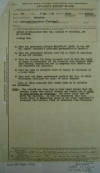
|
32. May 7, 1931.
Naval Intelligence Report on
Object of Nicaraguan Good Will
Mission to Guatemala and El
Salvador, from Agent "G,"
Tegucigalpa, p. 2.
" . . . 2. That the government
advance $10,000.00 (gold) to buy
off Dr. Zepeda (Sandino’s
principal protagonist in
Mexico). ¶ 3. That the
government advance such sum as
would be necessary to buy off
Sandino. ¶ 4. That the reasons
for these requests were to give
the world at large to understand
(if the requests were complied
with) that Central America was
not in sympathy with Sandino and
his followers and policies. ¶ 5.
That the sums so advanced would
be repaid by Nicaragua at a
later date. ¶ 6. That each oof
[of] these governments gestion
the U.S. to allow Nicaraguan
civilians the right to carry
weapons. ¶ Each of these
requests were turned down by El
Salvador and Guatemala. ¶ NOTE:-
The Attaché has from time to
time heard rumors that the
Moncada regime were behind
Sandino and backed him in order
to keep Marines in Nicaragua.
The above would tend to prove
the opposite. It must be
remembered that this report
dates to happenings prior to the
State Department’s statement
that marines would be withdrawn
from Nicaragua."
|
|
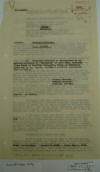
|
33. May 4, 1931. G-2
Translation of "Four Years of
Terrible Struggle,"
Excelsior, Mexico City,
Col. Gordon Johnston, Military
Attaché, p. 1.
"G-2 Report ¶ 3850 ¶ MEXICO ¶
POLITICAL ¶ SUBJECT: Foreign
Relations: ¶ C. A. SANDINO ¶ 1.
Forwarded herewith is
translation of an article
appearing in “Excelsior” of this
date, entitled “Four Years of
Terrible Struggle”, being an
interview given out by Dr.
Zepeda, Sandino’s personal
representative in Mexico. ¶
Gordon Johnston. ¶ Colonel,
Cavalry. ¶ Military Attaché. ¶
Source: As stated. ¶ J/p ¶ From:
M.A.Mexico. ¶ Report No.3338. ¶
Date: May 4, 1931. . . . "
|
|
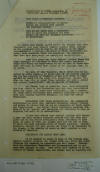
|
34. May 4, 1931. G-2
Translation of "Four Years of
Terrible Struggle,"
Excelsior, Mexico City,
Col. Gordon Johnston, Military
Attaché, p. 2.
" . . . Translation of article
appearing in “EXCELSIOR”, Mexico
City, May 4, 1931. ¶ FOUR YEARS
OF TERRIBLE STRUGGLE. ¶
Sandino’s Representative in
Mexico denies the charges made
against the Insurgent Leader. ¶
Says he has never been a
Communist. That he never has
received aid from Russia, and
that his economic situation is
precarious. ¶ Dr. Pedro José
Zepeda again denies the charges
that have frequently been made
against General Augusto César
Sandino. As his representative
in Mexico, Dr. Zepeda, as his
legal representative in Mexico,
has given us fresh statements,
denying, with authentic facts
and documents, the assertions
that have been made, which are
absurd, and contradictory. ¶
Just four years ago today
General Sandino began his armed
struggle in Nicaragua to fight
the Yankee invaders, today also
being the anniversary of the
killing of three hundred
civilians by bombs from planes
of the American Army, in El
Ocotal. ¶ In spite of this
tenacity, which could only be
inspired by noble causes,; in
spite also of the attacks
against him and the scarcity of
elements of war with which to
fight against an enemy who can
count with everything, General
Sandino has been able to stand
firm, becoming not only a clever
and valiant ‘guerrillero’, but
an apostle of liberty. ¶ Dr.
Zepeda told us yesterday that,
notwithstanding the high ideals
of the Nicaraguan hero had been
demonstrated again and again,
yet there were individuals, like
a certain Sr. Muñoz, whose
statements were recently
published to the effect that
Sandino receives pecuniary aid
from the Soviet Government. ¶
Coincident with those
declarations, the communists
distributed, on Labor Day,
leaflets attacking General
Sandino and making it appear
that he was an accomplice of
North American Imperialism. The
United States Government
declares Sandino to be an
‘outlaw’ and announces its
intention to keep on fighting
him until he is exterminated. ¶
It has been stated that General
Sandino left Mexico a year ago
with several thousand dollars
that had been supplied him by
the Soviet Government; while
precisely at that time, in April
of 1930, Dr. Zepeda sent him the
sum of $250. to cover his most
pressing items of travel
expenses. General Sandino’s
receipt for this amount was
shown to us yesterday by Dr.
Zepeda, a fac similie of which
we shall publish in our edition
of tomorrow. ¶ CONDITIONS FOR
LAYING DOWN ARMS. ¶ It is
useless to reply to each of the
attacks made against General
Sandino, Dr. Zepeda tells us,
since the bases proposed for
reaching an agreement, are well
known. Furthermore, the
detractors themselves are
disconcerted, and do not know
what charges to make. Some state
that Sandino is in the service
of Yankee Imperialism, and
others that he receives aid . .
. "
|
|
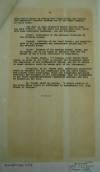
|
35. May 4, 1931. G-2
Translation of "Four Years of
Terrible Struggle,"
Excelsior, Mexico City,
Col. Gordon Johnston, Military
Attaché, p. 3.
" . . . from Soviet Russia to
attack that Imperialism; and
lastly, the Communists consider
Sandino one of the worst enemies
of their cause. ¶ The fact is
that Sandino’s banner carries
only one word “Patria”, and the
bases for laying down arms,
which have been repeatedly
announced, are the following: ¶
First: Evacuation of the
national territory by the
invading forces/ ¶ Second:
Revision of the Canal Treaty,
and cancellation of all
agreements and compromises
prejudicial to the national
honor. ¶ Third: Release of the
customs houses, banks, and
railroads, now in the hands of
American Jews who are backed by
the State Department at
Washington. ¶ Dr. Zepeda added--
“If Moncada could obtain these
terms, we would be the first to
support his Government until the
completion of his Presidential
period, and for no motive or
cause whatever would we become
part of his Government.” ¶
Naturally, as Dr. Zepeda said,
sufficient guarantees would be
demanded for due compliance with
the above terms; and without
those conditions, which are
considered perfectly patriotic
and stripped of all personalism,
they are determined to put their
disinterestedness (unselfish
motives) and love of country, to
the test. ¶ Dr. Zepeda ended by
saying- “A single reading of the
above three points is sufficient
to demonstrate the high ideals
of Sandino.”"
|
|
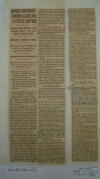
|
36. April 21, 1931.
"Hoover Denounces Sandino As
Outlaw; Expects Capture,"
New York Times.
"HOOVER DENOUNCES
SANDINO AS OUTLAW; EXPECTS
CAPTURE ¶ President Says
Bandit’s “Cold-Blooded Murder”
Puts Him “Outside Civilized
Pale.” ¶ MONCADA ASSAILS REBEL ¶
Nicaragua Musters 1,300 Men in
Drive to Combat Insurgent—Work
Resumed. ¶ CRUISERS REACH
HONDURAS ¶ American Women and
Children at La Lima Flee as
Rebels Try an Unsuccessful
Attack. ¶ The troubled
conditions in Nicaragua and
Honduras continued yesterday to
receive the close attention of
Washington. ¶ Reports received
from Honduras were that the
government there had the
situation in hand, though two
minor clashes occurred and
Americans were forced to flee La
Lima. ¶ HOOVER DENOUNCES
SANDINO. ¶ By RICHARD
V. OULAHAN. ¶ Special to The New
York Times. ¶ WASHINGTON, April
21.—President Hoover today
denounced Augusto Sandino,
Nicaraguan outlaw, as a
cold-blooded bandit “outside the
civilized pale.” ¶ The State
Department, through Secretary
Stimson, had taken the same
attitude, but it is surmised
that his declarations had not
made the impression that the
administration desired. The
course of the President in
repeating his Secretary of
State’s condemnation of Sandino
was evidently the result of a
determination to emphasize his
personal approval of that
attitude and at the same time
make clear to the world that the
United States holds there is no
revolutionary movement in
Nicaragua but merely some
sporadic disorders fomented by a
murderous band. ¶ Speaks
at Press Conference. ¶
The President’s condemnation of
Sandino and his following was
made orally at noon today during
the course of his semi-weekly
press conference. To a group of
about fifty newspaper
representatives, gathered in his
office in the Executive
Building, the President referred
to Sandino’s acts in scathing
terms. ¶ He mentioned with
evident satisfaction that the
Nicaraguan Government was
functioning through a force of
more than 1,300 members of the
new National Guard which was
several times greater than the
total of the Sandino bands and
that raids of these bands on
important points had been
frustrated by the guard. ¶ The
President put his stamp of
approval upon the way the
Nicaraguan Government is
functioning. He said it had
shown itself “fully cognizant of
its responsibilities,” and was
moving vigorously, despite the
difficulties of the recent
devastating earthquake at
Managua, the capital. In
conclusion the President said he
was confident Sandino “will be
brought to justice.” ¶
Text of Hoover Statement.
¶ What the President had to say
was afterward handed to
newspaper representatives as a
prepared statement, which read
as follows: ¶ Our advices are
that the Nicaraguan Government
has now placed in the field a
total of over 1,300 men of the
newly created National Guard in
a drive to clean up Sandino and
his fellow bandits. Our
representatives advise that this
force is several times that of
Sandino and his bands. His raids
upon important points have been
frustrated by the dispositions
of the guard, and protection of
our citizens on the coast is
made doubly sure by the presence
of our naval vessels. ¶ Sandino
has placed himself and his band
outside the civilized pale by
the cold-blooded murder of eight
or nine American civilians and
many Nicaraguans at isolated
places in the interior. ¶ The
Nicaraguan Government has shown
itself fully cognizant of its
responsibilities. It is moving
vigorously despite the
difficulties created by the
earthquake. While it may require
some time to accomplish their
purpose due to the mountainous
and jungle character of the
country, I am confident Sandino
will be brought to justice. ¶
New Policy Emphasized.
¶ The President’s remarks to
newspaper men are regarded as
further emphasizing what has
come to be recognized as a new
policy of the Hoover
administration in dealing not
only with disturbances in
Nicaragua but in the rest of
Central America. It seems to be
clear that it has set its face
against any further American
activities in those countries
which would amount to
intervention or would savor of
intervention on the part of the
United States. ¶ Judging by the
course announced by the State
Department last week and by
explanation since then, the
administration hereafter will
confine itself in Central
American troubles to protecting
the lives and property of
Americans and foreigners at
ports and in coastal regions
which can be reached by
warships, and will hold the
authorities of the country
concerned responsible for
protective measures at interior
points. ¶ The administration
emphasized repeatedly in the
past several days that it
reserved for itself the right to
protect its nationals and those
of foreign nations. This was
done after Secretary Stimson
asserted that the general
protection of Americans
throughout Nicaragua “would lead
to difficulties and commitments
which this government does not
propose to undertake.” ¶
Pleased by British Stand.
¶ Great interest was
attracted in official quarters
here by the policy of the
British Government to make no
move under present conditions in
behalf of its citizens in
Nicaragua, but to rely upon the
protection of the National Guard
and American forces. The
statement of the British
position was accepted with
gratification, particularly as
it was construed to mean that
the Nicaraguan situation will
not be complicated, for the
present at least, by
considerations pertaining to the
Monroe Doctrine. Secretary
Stimson maintained on Saturday
that the doctrine was not
involved. ¶ The British attitude
is interpreted as similar to
that taken by the United States
in warning its citizens to go to
the coast if in danger. Some
international lawyers here
contended today that there was a
difference because Great Britain
did not have armed forces in
Nicaragua, just as the United
States did not have troops on
Mexican soil when President
Wilson in 1914 and 1916 warned
Americans to go to coastal
points and the border to obtain
protection. ¶ It was pointed out
that it was customary for
governments to warn their
nationals to go to points of
safety when serious disturbances
occurred in countries where
these governments were not able
to afford protection to their
own people. ¶ Navy
Reports on Raids. ¶ The
Navy Department made public
today a report from Rear Admiral
Arthur St. Clair Smith,
commander of American naval
forces in Central American
waters, who said work was being
resumed in Nicaragua. His
message also completed the list
of casualties of the bandit
raids. ¶ “Most of the dead are
foreigners,” he reported, adding
that this was “evidently done
deliberately and not done in the
previous yearly raids.” ¶
Admiral Smith’s denunciation of
the bandits followed his
estimate of the raids as being
of the type usual at this
season, except for the killings
and mutilation of bodies
indulged in by the followers of
Sandino. He also reported that
papers seized from a captured
Sandino follower, known as
Blandon Bore, “a rough seal
showing a bandit cutting the
head from a prostrate dead
marine.” ¶ Rear Admiral Smith’s
complete report of casualties in
Nicaragua showed sixteen dead,
not including one native
Nicaraguan killed by an American
patrol from the U. S. S.
Asheville when the Nicaraguan
failed to answer a challenge.
The foreign dead included eight
American civilians, one marine
officer, four British subjects,
one Guatemalan, one Colombian
and one German missionary. ¶
Text of Admiral’s
Report. ¶ Rear Admiral
Smith’s report follows: ¶
Situation is quiet. No bandits
in vicinity. Work being resumed.
Bluefields also reports quiet. ¶
Bandits first appeared in this
vicinity at Logtown, about sixty
miles inland on about April 11.
Nearly all the deaths occurred
in this vicinity and between
April 11 and 13. Those killed
were overseers or workers on the
fruit farms of the Bragman Bluff
Lumber Company and they were
surprised and killed without
chance of escape. The bandits,
who were not known to be in the
area, numbered in all about 150.
Captain Pefley ran into an
ambush of them and it was from
men who escaped from this patrol
that the first alarm was given.
¶ The best opinion hereabout is
that all the present activity is
similar to that which has
occurred at this time in
previous years and is for the
purpose of raiding for supplies
and stores. Raids are made just
before the rainy season and
furnish the supplies needed for
the ensuing months. ¶ The
earthquake, while it helped the
situation by engaging the
activities of the Guardia,
otherwise seems to have had
nothing to do with the original
plan, though it was taken
advantage of by the bandits. The
Bragman Bluff Lumber Company
lost about $21,000 worth of
stores from their commissaries,
mostly carried away by bandits.
In addition to these a large
amount was looted from stores at
Cabo Gracias a Dios. ¶ When the
Asheville (gunboat of Special
Service Squadron) arrived at
midnight of April 13 the entire
population of Puerto Cabezas was
in a highly excited state and
was congregated about the pier.
The Guardia being absent near
Logtown, there was no one to
protect the town. The bandits at
this time had gotten between the
Guardia and the town and a
considerable party were but
eight miles from the town. They
never came nearer and the
arrival of the Asheville at the
opportune moment is generally
thought to have been the reason.
. . . "
|
|
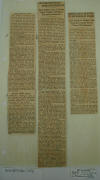
|
37.
April 21, 1931. "Hoover
Denounces Sandino as Outlaw;
Expects Capture" (cont.); "Says
Hoover Policy Hurts Our
Prestige," and "Rebels' Raid
Awaited by Nicaraguan Guard,"
New York Times.
" . . . Guardia Deserves
Credit. ¶ The Guardia
extricated itself from its
position at Logtown and returned
to town on the 14th at 1 P. M.
Fighting by the Guardia, under
difficulties due to being
outnumbered and surrounded,
continued from the first contact
and until the bandits were
forced to retire. In this the
planes assisted materially by
bombing. The conduct of the
Guardia is universally praised
and there is no doubt that they
deserve greatest credit. ¶ I
have inspected the papers
captured from Blandon Bore and
find them as first reported.
They are now in the hands of
Major John Marston (Colonel in
Guardia, commanding eastern area
of Guardia Nacional). Two of
them bear a rough seal showing a
bandit cutting the head from a
prostrate dead marine. ¶ In
addition to the eight Americans
previously reported killed, the
following others previously
reported, though not by name,
are now listed: Lucias May,
Walter Manning, E. Rodney, Henry
Roper, all British subjects from
Jamaica; M. Sagastume,
Guatemalan; A. Viskaino,
Colombian. Also not previously
reported, the Rev. Carl
Bregenzer, a Moravian
missionary, a German who took
out his first American papers in
1921 but did not complete. There
were in addition a small number
of Nicaraguans, but most of the
dead are foreigners, evidently
done deliberately and not done
in the previous yearly raids. ¶
Rear Admiral Smith, aboard the
cruiser Rochester, arrived at
Cape Gracias a Dios, off the
border line of Nicaragua and
Honduras, today. ¶ The Navy
Department ordered three
transport planes to Managua for
use in transporting Nicaraguan
Guardia Nacional troops from the
west to the east coast, these
planes to be added to three
other transport planes already
available for this work there.
One transport, a Ford, will go
from Fort Benning, Ga.; another
Ford will proceed from San
Diego, and a Sikorsky transport
today flew up from the naval air
station at Coco Solo, Panama. ¶
Moncada Assails Outlaws.
¶ MANAGUA, Nicaragua, April 21
(AP).—Outlaws who were
responsible for recent fatal
raids in Nicaragua, President
Moncada of the republic said
today, are “not civilized.” ¶
“Nicaragua, prostrated by the
recent catastrophe,” President
Moncada said, “felt the comfort
of the whole world’s helpful
hand and saw the patriotic
harmony of the Nicaraguan people
demonstrated. But we feel that
those who still follow banditry
and who kill in these hours of
Nicaragua’s travail and efforts
to reconstruct the quake-torn
area are not civilized. Even if
previously they have enjoyed
some favorably opinion, they
have now fallen the world’s
respect.” ¶ Foreign Minister
Julian Irias announced today
that financial help was still
coming in to Managua and that
about 40,000 bolivars was
received from the government of
Venezuela, as well as $2,000
from the new Spanish Republic
transmitted through the
Secretary of the Spanish Central
American Legation at Salvador. ¶
SAYS HOOVER POLICY HURTS
OUR PRESTIGE ¶ Representative
Ayres of Kansas Asserts
Coolidge’s Methods in Nicaragua
Are Reversed. ¶ Special
to The New York Times. ¶
WASHINGTON, April 21.—Secretary
of State Stimson’s instructions
to the United States Legation in
Nicaragua to advise American
citizens that the United States
Government “cannot undertake
general protection of Americans
throughout that country with
American forces,” and that those
who remain “do so at their own
risk,” were characterized
tonight by Representative W. A.
Ayres of Kansas, as a sharp
abandonment of Coolidge policy.
In a statement issued through
the Democratic National
Committee he accused the
administration of “wabbling”
indecision. ¶ “President Hoover
and Secretary Stimso [Stimson],”
said Mr. Ayres, “seem to have
some difficulty in making up
their minds as to just what
position to take in the present
Nicaraguan situation. ¶ “I might
say this country established the
present Nicaraguan Government.
We interfered in a civil war and
superintended an election which
we were solemnly assured would
mark the end of the use of our
marines in the disturbed little
republic. Ever since we have
been chasing the Sandinista
forces, which may be designated
either as rebels against the
government imposed on them by
ourselves, or as bandits.
Invariably the people in power
choose the latter designation
for those who are in arms
against them. It makes no
particular difference whether we
fight the jungle hostiles with
American Marines or with
Nicaraguan National Guardsmen
officered by our marine
officers. ¶ “Now a number of
American civilian citizens,
presumably engaged in their own
commercial enterprises, have
been killed by the Sandinistas,
and our State Department has
issued an extraordinary order
that Americans in the Nicaraguan
interior who stay there must ‘do
so at their own risk and must
not expect American forces to be
sent inland to their aid.’ ¶
“This sharp abandonment of the
Coolidge policy, which gave
notice that ‘the persons and
property of a citizen are a part
of the general domain of a
nation even when abroad,’
naturally caused a lot of
criticism. Whereupon the
administration hastened to
explain that the American
Government has no intention of
allowing American lives in
Nicaragua to be jeopardized. ¶
“Of course, there is no way of
reconciling the two
announcements. When we tell an
imperiled American citizen in
Nicaragua that if he remains on
his own property he does so at
his own risk, we certainly are
not relieving him from jeopardy.
The policy of the present
administration for the past two
years undoubtedly caused these
American citizens to feel that
the Coolidge policy was to be
continued. ¶ “It would seem to
be simple common sense that we
do one thing or the other in
Nicaragua—either to permit that
country to work out its own
destinies, by revolution if it
is so minded, or to go through
with what our government started
in to do—would be intelligent
and consistent. The half-way
measures we have pursued and are
pursuing satisfy nobody and
constitute simply an invitation
for a continuation of whatever
outrages are perpetuated. ¶ “We
are not in Nicaragua because of
the Monroe Doctrine. No country
of any other hemisphere is
threatening to extend its
political system to Nicaragua,
or do aught that would need to
cause concern to our government.
We are there for but one
reason—under the guise and claim
that it is for the protection of
American lives and property. ¶
“We have had many examples of
the unfortunate effects of
indecision, lack of courage and
inconsistency on the part of the
administration in our domestic
affairs. Now the
administration’s wabbling has
brought about an impossible
situation in the foreign field
and President Hoover is as usual
floundering, with consequent
destruction of our prestige and
an accretion of the suspicion
and resentment of the smaller
American nations toward this
country.” ¶ REBELS’ RAID
AWAITED BY NICARAGUAN GUARD ¶
Large Groups of Sandino’s Men
Reported in Jungles Outside 2
Tows [Towns]—Work Resumed.
¶ BLUEFIELDS, Nicaragua, April
21 (AP).—Augusto Sandino’s
rebels were reported skulking
today in large groups in the
jungles of the Wanks River at
Saclin and San Pedro del Norte
with Nicaraguan National
Guardsmen on the alert for
renewed outbreaks. ¶ During the
last twenty-four hours the guard
had received no reports of any
encounter with the outlaws but
the guardsmen and foreigners
were packing their arms handy in
case the rebels should strike
again. ¶ Since the ships have
left with the last of the women
and children from the rebels’
zone, workmen were reported to
have resumed the cutting of
bananas for delivery to steamer
Bluefields and Puerto Cabezas
were reported quiet today with
conditions normal. ¶ Definite
news was brought in that no
lives were lost in the raid of
Apr il15on [April 15 on] Cape
Gracias a Dios but the little
town was looted of all movable
merchandise and the Tropical
Radio station was wrecked. ¶
Word also was received of the
safety of the wife and children
of the murdered Moravian
missionary, the Rev. Karl
Bregenser. They were reported
safe at the Neptune mine under
the protection of the native
national guard. Mr. Bregenser
was killed by Pedro Blandon,
leader of the Logtown massacre,
who in turn was slain by
Americans. ¶ American and other
foreign refugees were brought
into Puerto Cabezas, all well
and uninjured, today aboard the
U. S. S. Asheville and the U. S.
S. Rochester arrived at Puerto
Cabezas from Bluefields with
Rear Admiral Smith aboard. ¶
PUERTO CABEZAS,
Nicaragua, April 21 (AP).—Rumors
of an impending attack on Puerto
Cabaezas by Nicaraguan
insurgents under General Sandino
continued to persist today.
Reinforcements for the National
Guard patrol here arrived by
plane from Managua, equipped
with machine guns and a supply
of ammunition. Sandino was
rumored to be at Al Tamirano on
the Wanks River. ¶ The U. S. S.
Asheville was preparing to sail
tonight and the aircraft carrier
Langley was expected to replace
her. There were no actual
contacts with the bandits today,
but the National Guard was
maintaining an active patrol on
all railroads."
|
|
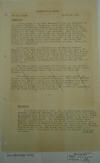
|
38. April 22, 1931.
Press Release on Nicaragua, US
Department of State.
"DEPARTMENT OF STATE ¶ FOR THE
PRESS ¶ April 22, 1931 ¶
NICARAGUA ¶ A radiogram to the
Navy Department from the
Commander of the Second Brigade
in Nicaragua, dated 10:23 this
morning, reported that Sergeant
Altamarino’s guardia patrol from
Telpaneca surprised a group of
15 bandits under an unknown
chief in camp on the 14th of
April near Anucayan. Four
bandits were killed and one
rifle, one pistol and two
machetes captured. Lieutenant
Kipp’s guardia patrol from
Togalpa was in contact with a
group of 10 bandits under an
unknown chief on April 19 on the
Cerro Grande River near
Totogalpo. One bandit was
killed, the bandits having been
surprised in camp. There were no
guardia casualties. ¶ A telegram
from the Commander of the
Special Service Squadron to the
Navy Department dated 2:04 a.m.,
April 22, reported that an
American naval vessel had
visited Cape Gracias á Dios on
April 21 and found conditions
quiet. There had been no bandits
there since April 15. There was
some apprehension ashore of a
possible return of bandits, but
it was thought unlikely.
Conditions at Bluefields and
Puerto Cabezas were reported
quiet. ¶ The same telegram
reported with reference to the
situation on the North Coast of
Honduras that the Commander of
the cruiser division had
exchanged calls with Honduran
officials at Truxillo. ¶ The
rebels were reported breaking
into small groups and offered no
resistance to government troops.
The U. S. S. MEMPHIS reported
all quiet at Ceiba and stated
that cargoes were being loaded
as usual and that communication
was had with Tela by telephone
and all was reported quiet
there. The U. S. S. MARBLEHEAD
at Puerto Cortes reported that
reports of engagements near San
Pedro Sula appeared unfounded. ¶
NICARAGUA ¶ Vice Consul Alvin T.
Rowe, jr., at Bluefields,
Nicaragua, reported yesterday
afternoon that the marines which
were landed at Bluefields on
April 18 had on April 28
returned to the U. S. S.
SACRAMENTO since a part of the
Guardia patrol at El Gallo had
returned to Bluefields. The
commander of the eastern area
Guardia reported that in his
belief all bandit forces of
consequence have left Eastern
Nicaragua and that this area may
now be considered quiet. Bandits
can operate efficiently in
Eastern Nicaragua only in the
dry season which usually ends in
the middle of May. Conditions on
the coast are rapidly returning
to normal. ¶ 4/29/31"
|
|
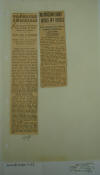
|
39.
April 30, 1931. "Four Rebels
Killed in Nicaragua Clash,"
New York Times, and
"Nicaraguan Guard Drives Off
Rebels," Washington Post.
"FOUR REBELS KILLED IN
NICARAGUA CLASH ¶ Guardia
Nacional Also Reports Three
Wounded by Patrol Headed by a
Marine. ¶ PEACE NEAR IN HONDURAS
¶ President Mejia Says
Insurgents Lacking Popular
Support, Are Now Driven Into
Corner. ¶ Special to
The New York Times. ¶
WASHINGTON, April 29.—Four
Nicaraguan outlaws were killed
and three wounded in a skirmish
with a Guardia Nacional patrol
under the command of O. A. Inman
of Oakland, Cal., a Marine Corps
officer, last Thursday at Lacus
Creek in the northeastern
section of the Department of
Jinotega, according to report
received by the Navy Department
today from Rear Admiral Arthur
St. Clair Smith, commander of
the special service squadron.
There were no Guardia
casualties. The Guardia then
proceeded to Saklin, thence down
the Coco River to Cape Gracias à
Dios, and thence to Puerto
Cabezas, without incident. ¶
Reports to both the Navy and
State Departments today said
that conditions in Eastern
Nicaragua were rapidly returning
to normal. It was pointed out
that outlaws can operate
efficiently in that region only
in the dry season, which usually
ends in the middle of May.
Guardia officials expressed the
belief that all outlaw forces of
consequence have left Eastern
Nicaragua and that this area may
now be considered quiet. ¶
Marines Return to Ship.
¶ Alvin T. Rowe Jr., vice consul
at Bluefields, advised the State
Department that the marines
which were landed there on April
18 returned to the gunboat
Sacramento yesterday, since a
part of the Guardia patrol at El
Gallo had returned to
Bluefields. Admiral Smith
supplemented this in a report to
the Navy Department by stating
that detachments of the Guardia
were at each of the three
principal ports on the east
coast and were sufficient to
hold the situation. ¶ Admiral
Smith arrived at Trujillo,
Honduras, yesterday in his
flagship, the cruise Rochester,
and proceeded this morning to
Puerto Cortes, Honduras. He said
conditions in Honduras were
quiet. ¶ Two transport planes
piloted by marine officers
arrived at Managua, Nicaragua,
yesterday after a flight over
water from Miami, Fla. They will
augment the marine planes in
Nicaragua, as will a transport
plane, which was flown yesterday
from the naval air station at
Cocosolo, Canal Zone. ¶
NICARAGUAN GUARD DRIVES OFF
REBELS ¶ Four
Insurgents Are Slain in Renewed
Fighting at Lacus Creek. ¶
(Associated Press.) ¶ Renewed
fighting between Nicaraguan
insurgents and the native
guardia was reported to the Navy
Department yesterday with word
of four dead and three wounded
among the insurgents. ¶ A
dispatch from Rear Admiral
Arthur St. Clair Smith told of a
skirmish at Lacus Creek, on
April 23. The guardia suffered
no casualties. ¶ The guardia was
commanded by Capt. O. A. Inman,
of the Marine Corps. After the
battle he led his patrol down
the Coco River to Cape Gracias a
Dios and then to Puerto Cabezas
without incident. ¶ Another
dispatch from Rear Admiral Smith
said conditions generally were
quiet in Nicaragua and Honduras.
¶ The gunboat Sacramento has
withdrawn forces landed at
Bluefields, Nicaragua, to guard
the town. Detachments of native
troops are stationed at each of
the three principal Nicaraguan
ports on the east coast. Admiral
Smith said these were
“sufficient to hold the
situation.” ¶ Two Marine Corps
transport planes arrived at
Managua for service in
transferring troops of the
native guardia from place to
place. They flew from the United
States by way of Cuba, piloted
by Lieuts William G. Manley and
Sidney R. Williamson."
|
|
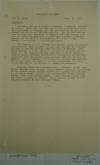
|
40. April 30, 1931.
Press Release on Nicaragua, US
Department of State.
"DEPARTMENT OF STATE ¶ FOR THE
PRESS ¶ April 30, 1931 ¶
NICARAGUA ¶ Minister Matthew E.
Hanna at Managua, Nicaragua,
reported at 11 a.m., April 29,
that Marines in the northern
area have been withdrawn to
Managua with the exception of 20
men in Ocotal who are to be
withdrawn shortly. One hundred
Marines have already been
withdrawn to Managua from the
central area and the remaining
garrisons in that area numbering
approximately 125 men will be
withdrawn by the middle of May.
The Guardia has replaced the
Marine garrisons. ¶ The Guardia
in the northern and central
areas now numbers approximately
1400 enlisted men and will
shortly be increased to 1500 by
new enlistments under the plan
of February last. The situation
in these areas is reported to be
quiet and patrols are not
encountering any organized bands
of bandits. General Calvin
Matthews considers the repulse
of the bandits’ incursion into
the eastern area, combined with
killing of Blandon, as the
severest blow organized banditry
has suffered for a long time. He
says he has more confidence than
ever in the ability of the
Guardia to handle the situation.
¶ Minister Hanna also reported
that a Guardia patrol from
Puerto Cabezas under Captain
Inman, Guardia Nacional
(Lieutenant United States Marine
Corps), encountered a group of
20 bandits on the Lecus River,
killing four and wounding three
bandits. Captain Inman has
searched Saklin – Cape Gracias à
Dios area, and found no signs of
bandits. He is leaving a post of
six enlisted Guardia at Cape
Gracias à Dios."
|
|
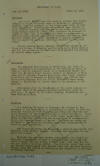
|
41. April 19, 1931.
Press Release on Nicaragua, US
Department of State.
"DEPARTMENT OF STATE ¶ FOR THE
PRESS ¶ APRIL 19, 1931 ¶
Honduras ¶ The U.S.S. MEMPHIS
was this morning ordered from
Puerto Cabezas to visit the
north coast of Honduras to
safeguard American life and
property in the north coast
towns if they were endangered.
These orders were issued upon
receipt of word of revolutionary
disturbances on the north coast
which might imperil American
lives. The situation in Honduras
is different from that in
Nicaragua as there is apparently
a revolutionary movement against
the Honduran Government. The
American forces will limit
themselves to making provisions
for the safety of American lives
and property in the coast towns.
¶ Before leaving Puerto Cabezas
the MEMPHIS landed an officer
and 13 men, 2 Browning machine
guns and a Lewis machine gun for
the protection of Americans
there pending the arrival of
another naval vessel. ¶
Nicaragua ¶ The Americana Vice
Consul at Bluefields, Mr. Alvin
T. Rowe, reported to the
Department on the evening of
April 18 that, in view of
repeated rumors of a threatened
bandit attack upon El Gallo
Fruit Company station at
Galloon, 3 officers and 27
enlisted Guardia were being sent
there, leaving 3 officers and 13
Guardia in Bluefields. One
officer and 30 enlisted Marines
from U.S.S. SACRAMENTO were
being landed at Bluefields in
insure order in the absence of
the Guardia. ¶ Radiograms from
the Commanders of the naval
vessels on the east coast of
Nicaragua reported everything
quiet at 6:00 p.m., on April 18,
at Puerto Cabezas, Bluefields
and Cape Gracias a Dios. ¶
Honduras ¶ The American Minister
to Honduras, Mr. Julius G. Lay,
reported to the Department on
the evening of April 18 that the
American Consuls at Port
Castilla and Ceiba had reported
persistent rumors of imminent
uprisings in their districts.
There has been serious unrest on
the north coast, especially in
the Ceiba and Truxillo districts
due principally to unemployment,
which might easily result in
riots. The American women and
children in the Truxillo
district have been concentrated
at Castilla as a precaution. ¶
The consul at Ceiba had
requested a warship and stated
that American lives were in
danger. Minister Lay approved
the request for a ship. ¶
Minister Lay reported Sunday
morning that the Consul at Tela
has telegraphed him that a
revolutionary force had captured
Progreso and was moving towards
Tela. New Tela was being put
under a civilian patrol. The
Minister added that word had
reached Tegucigalpa that General
Diaz had captured Progreso.
General Diaz was quoted as
stating he was operating in the
name of General Ferrera."
|
|
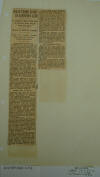
|
42.
April 19, 1931. "Peace
Terms Given By Sandino's Aide,"
New York Times.
"PEACE TERMS GIVEN BY
SANDINO’S AIDE ¶ Dr. Zepeda in
Mexico City Says All Marines
Must Depart From Nicaragua. ¶
TELLS OF REBEL’S PLEDGE ¶ Outlaw
Will Support Moncada When Troops
Go, He Says—Congratulates
Hoover. ¶ Wireless to
THE NEW YORK TIMES. ¶ MEXICO
CITY, April 18.—Not until the
last American marine has been
withdrawn from Nicaragua will
there be peace there, according
to Dr. Pedro Jose Zepeda,
spokesman for Augusto Sandino,
rebel leader. ¶ “Sandino is and
has been fighting to clear
Nicaragua of all foreign troops,
and what the marines may be
there for does not affect the
situation,” said Dr. Zepeda.
“They must all go. ¶ “Sandino
has promised President Moncada
his support when the government
follows a nationalist policy and
works without American marines
for its protection. Why, then,
does he wish to retain them? ¶
American lives and property in
Nicaragua are not in danger,
added Dr. Zepeda. He said there
was not a single case of damage
to American property and
emphasized that Sandino’s
collections of money were
reasonable taxes which would
have been levied by a recognized
government. ¶ The recent
fighting at Logtown, Dr. Zepeda
said, was caused by civilians
who telephoned to Puerto Cabezas
for military aid against
Sandino’s men when they came for
supplies. Because of the hostile
reception, Sandino called off
the truce which followed the
Managua earthquake, Dr. Zepeda
explained. ¶ Message Sent to
Hoover. ¶ Believing then that
all marines were to leave
Nicaragua at once, Dr. Zepeda
telegraphed to President Hoover
yesterday as follows: ¶ “As
official representative of the
Army for the Defense of the
National Sovereignty of
Nicaragua, permit me to extend
to your Excellency cordial
congratulations upon the changed
policy of your government toward
Latin America, especially
Nicaragua. Your Excellency’s
declaration that the Nicaraguan
National Guard should be charged
with sole responsibility for
conserving order in Nicaragua—a
statement implying the prompt
withdrawal of the American
forces of occupation—is the
first real guarantee of peace
for that unfortunate country. ¶
“Your statesmanlike attitude not
only insures a new order in
Nicaragua but will doubtless
dissipate the deep resentment of
all Spanish-speaking countries
of our continent, which until
now have observed that, despite
the reiterated promises of your
country to respect the
sovereignty of such nations,
Nicaragua has been obliged
continually to struggle for
national independence. ¶ “Such a
formal promise was announced by
you to the ex-President of
Argentina, Hipolito Irigoyen,
that the United States would
with lofty idealism respect the
democratic rights of all
nations. We are sincerely
pleased that such rights will be
observed regarding Nicaragua in
accordance with the ideals for
which our army of defense has
been fighting. ¶ “If the promise
of your Excellency is carried
out in a manner permitting the
liberty-loving Nicaraguans to
dedicate themselves henceforth
to honest labors, as they have
always desired, your Excellency
may be assured we will be the
first to cooperate in an
effective manner to bring
enduring peace and that the
citizens of all countries will
enjoy within our territory all
the guarantees and safety which
they would be enjoying now if
the unjust military occupation
had ceased. Such guarantees of
life and property can only be
assured in Nicaragua by the
good-will and friendship of all
Nicaraguan citizens and not by
brute force. ¶ “Permit me,
therefore, to offer your
Excellency my sincere
congratulations on the proposed
change in your policy toward our
country. May your Excellency be
assured that the solution of
Nicaraguan affairs rests upon
the complete abandoning of force
and upon respect for our
national sovereignty.” ¶
Shift Featured in Press.
¶ MEXICO CITY, April 18
(AP).—The decision by the United
States Government not to use the
Marine Corps against insurgents
in Nicaragua was displayed under
glaring headlines by the
newspapers here today, but some
of them characterized the move
as a “confession that American
troops are unable to protect the
lives of American citizens or to
restore peace in Nicaragua.” ¶
Dr. Pedro José Zepeda, Augusto
Sandino’s representative here,
cautioned his countrymen not to
receive the change of policy
with too much enthusiasm,
asserting that the declaration
of the State Department did not
leave the situation entirely
clear in his mind."
|
|
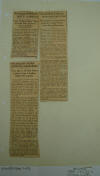
|
43.
March-April 1931. Press
clippings: March 25:
"Guardsman Is Killed In
Nicaraguan Clash," New York
Times. April
12: "Nicaraguan Rebels Kill U.S.
Officer - Capt. Harlen Pefly
Slain in Clash Near Logtown;
Native of Ohio," Washington
Post. April 13:
"Nicaraguan Patrol Reported
Surrounded," New York Times.
"Nicaraguan Rebels Kill
U. S. Officer ¶ Capt. Harlen
Pefley Slain in Clash Near
Logtown; Native of Idaho.
¶ (Associated Press.) ¶ The Navy
Department was informed last
night that Capt. Harlen Pefley,
of the Marines, had been killed
in a clash between a Nicaraguan
Guardia detachment and
insurgents yesterday in
northeastern Nicaragua. ¶ Capt.
Pefley, a native of Idaho, was
leading the Guardia detachment,
the dispatch to the Navy said,
when the insurgents were
encountered. An enlisted man was
wounded, but the Navy was not
advised whether he was a Marine
or Guardsman. ¶ The clash
occurred near Logtown, which is
about 12 miles from Puerto
Cabezas, base of the Guardia
patrol. There were about 50 in
the insurgent band, and the
dispatch made no mention of its
casualties. ¶ NICARAGUAN
PATROL REPORTED SURROUNDED ¶
Force Sent to Aid Slain Marine
Captain’s Group Is Fighting
Bandits Near Logtown. ¶
By Tropical Radio to THE NEW
YORK TIMES. ¶ MANAGUA,
Nicaragua, April 12.—A
Nicaraguan National Guard patrol
under command of Lieutenant
Darrah, United States Marine
Corps, was reported today to
have been surrounded by bandits
yesterday on a moss farm south
of Logtown, near Puerto Cabezas,
on the east coast, with fighting
continuing all night and today.
¶ The patrol had been dispatched
to the aid of another guard
detachment whose leader, Captain
Harlan Pefley of the Marine
Corps, was killed yesterday
morning as his patrol entered
Logtown, the end of a railroad
owned by the Bragman’s Bluff
Lumber Company, to investigate a
rumor that bandits were
operating near by. ¶ After
scouting the territory and
entering Logtown, according to
National Guard Headquarters,
Captain Pefley opened the door
of a house and was shot on the
doorstep by bandits hidden
within, with Corporal Morales of
the guard wounded. The leader of
the bandits was unknown. ¶ The
report telling of the
surrounding of the patrol headed
by Lieutenant Darrah was
received late last night from
Señor Salassi, the manager of
the lumber company. Two
Americans, names unknown, were
said to have been captured by
the outlaws, with one later
escaping. The report is
unconfirmed and is thought
probably to have been
exaggerated. ¶ Guard patrols
have cleared Puerta Cabezas
[Puerto Cabezas] to aid
Leutenant [Lieutenant] Darrah.
Two marine bombing planes left
Managua early this morning and
the U. S. S. Asheville is
reported here as having left
Panama for Puerta Cabezas
[Puerto Cabezas] in order to
protect the town, thus enabling
the entire guard force located
there to pursue the bandits. ¶
From 10 A. M. to noon today
Lieutenant Darrah’s patrol was
reported fighting the bandits,
who are apparently well armed. ¶
(From Late Editions of
Yesterday’s TIMES.) ¶
GUARDSMAN IS KILLED IN
NICARAGUAN CLASH ¶ Three Bandits
Are Slain and One Captured in
Another Contact—Groups Reported
Converging. ¶ By
Tropical Radio to THE NEW YORK
TIMES. ¶ MANAGUA, Nicaragua,
March 24.—National Guard
headquarters report that Captain
Kelly, commanding nineteen
guards and three armed
civilians, met a bandit group
numbering forty under the bandit
leader Umanzor at 9 o’clock this
morning near Alta Gracias in the
Department of Nueva Segovia. ¶
The firing lasted ten minutes,
when the bandits withdrew. The
bandit casualties are unknown,
while the guard casualties were
one Nicaraguan Guard, named
Mendoza, killed, and three
guards, including one sergeant,
all Nicaraguans, wounded.
Patrols dispatched from Daraili
and Telepaneca [Telpaneca] are
pursuing the bandit group. ¶
Lieutenant Klein, with eight
guards, surprised a group of
bandits numbering fifteen near
Chaguite Grande at 10 o’clock
this morning. The firing lasted
for ten minutes and when the
bandits fled the guard patrol
pursued, regaining contact and
killing three bandits and
capturing one. The bandit leader
was unidentified. There were no
guard casualties. ¶ Rumors
current in Managua state that
150 men, all armed with new
rifles and eight machine guns,
under command of Margerito
Espinoza, former Colonel in the
Nicaraguan Army, have headed
into the northwestern section of
the Department of Chontales.
This group is reported to be
endeavoring to meet two more
groups coming from the east
coast up the Rio Grande River,
where bandit groups were
recently reported in camp. ¶
Another rumor has it that 120
men under the noted bandit
chieftain, Pedron Altamirano,
and Herrera passed through a
farm east of Muy Muy owned by
Señor Correa, a Deputy, from the
east coast. The group was en
route to Chontales. Guard
patrols have been dispatched in
pursuit."
|
|
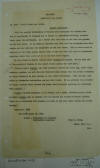
|
44. April 29, 1931.
G-2 Report on Bandit Activities
in Nicaragua, Lt. Col. Fred T.
Cruse, Military Attaché, San
José.
"NICARAGUA ¶ POPULATION AND
SOCIAL ¶ No. 2700 – Public Order
and Safety. ¶ Bandit Activities.
¶ With the partial withdrawing
of Marines from Nicaragua the
bandits have had an opportunity
to organize and to forage in
comparative security,
particularly since the
earthquake. As a result they
were able to put over the
attacks on the East Coast. It is
reliably reported that they have
now withdrawn from this region
and are back near the headwaters
of the Coco river. This is what
would be expected as the rainy
season starts early in May and
they will have to accumulate
supplies, which they could not
do in the East Coast region. ¶
In the attack on Puerto Cabezas
Pedro Blandon was killed. He had
been one of the principal
leaders of the bandit forces
during the last year. ¶ Colonel
Carlos Quesada, who left
Sandino’s forces two years ago,
after being severely wounded,
was with General Filiberto Díaz
Zelaya when the latter attempted
to leave Guatemala to join
Ferrera in the recent
revolution. Both men were
captured by Guatemalan
authorities and are still held.
It was probably the presence of
Carlos Quesada which started the
rumor that Ferrera’s uprising
was connected with Sandino. ¶
Sandino himself continues to be
nothing but a rumor, although
papers found on Pedro Blandon
make it certain that he planned
the attack on Puerto Cabezas.
There is no indication that
Sandino was even on the East
Coast during the actual attack.
¶ Report No. 1191 ¶ San
José--April 29, 1931 ¶ Source –
Evaluation of reliable
information received. ¶ Fred T.
Cruse, ¶ Lieut. Col., F.A. ¶
M.A."
|
|
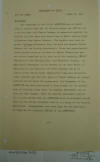
|
45.
April 14, 1931. Press
Release on Nicaragua, US
Department of State.
"DEPARTMENT OF STATE ¶ FOR THE
PRESS ¶ APRIL 14, 1931 ¶
Nicaragua ¶ The Commander of the
U.S.S. ASHEVILLE now at Puerto
Cabezas reports that all the
Guardia except one officer and a
few men have left Puerto Cabezas
in operations against the
bandits and they were last heard
from at Waki, seventy-eight
kilometers from Puerto Cabezas.
The bandits were last reported
thirteen kilometers from the
port and between Puerto Cabezas
and the Guardia detachment.
There are approximately three
hundred American citizens at
Puerto Cabezas who are now
either assembled on the dock or
on the steamship CEFALU
belonging to the Standard Fruit
and Steamship Company. An
additional detachment of the
Guardia on the Poco River is
advancing in the direction of
Puerto Cabezas but as it cannot
arrive for at least twenty-four
hours and unreliable civil
outposts are the only guard of
Puerto Cabezas at present and
they do not cover all
approaches, the Commander of the
ASHEVILLE has been authorized to
land forces for the protection
of American lives until the
Guardia detachment can arrive
and take charge. When the
Guardia detachment arrives the
landing forces from the
ASHEVILLE will be withdrawn
aboard ship and the entire
situation left in the hands of
the Guardia detachment.
Arrangements have been made for
the Americans to leave on the
steamship CEFALU or the
ASHEVILLE."
|
|
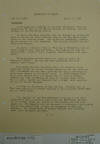
|
46. April 15, 1931.
Press Release on Nicaragua, US
Department of State.
"DEPARTMENT OF STATE ¶ FOR THE
PRESS ¶ April 15, 1931 ¶
NICARAGUA ¶ A telegram was
received by the Navy Department
from the Commanding Officer of
the Second Brigade at Managua,
Colonel Bradman to the following
effect: ¶ A report had been
received from the Guardia at
Bluefields that on the 6th of
April bandits blew up the Big
Falls power plant of the Neptune
mines. The mines are operating,
however, as one dynamo has been
repaired. The bandits avoided
the Neptune mines proper. ¶ On
April 14 Captain John C. Wood
was at Wawatotom with an enemy
group at his rear and front. His
planes had left to reconnoitre.
Aviator Young requests relief
planes with more bombs. ¶ Three
hundred persons spent the night
on board the Steamship CEFALU.
The Civicos were exhausted and
were leaving their posts. ¶
Disorders had been reported
along the railroad lines
committed mostly by unruly,
vicious employees who had
recently been discharged and who
were reported as taking
advantage of conditions caused
by the bandit raid. A later
message from Bluefields stated
that the planes had returned to
Puerto Cabezas and were
proceeding at once to Managua
where Young was to make a report
and request that a plane well
supplied be sent to Puerto
Cabezas. ¶ A bridge at Kilometer
20 was burning. Captain John C.
Wood was returning to Puerto
Cabezas on the schooner NORTH
STAR via the Wawa River. ¶ The
Captain of the USS ASHEVILLE
reported to the Navy Department
that a landing force from the
ASHEVILLE returned to the vessel
after the return of the Guardia
at 1:30 p.m. April 14. The
Guardia did not succeed in
dislodging the bandits and it
was stated that it will be
necessary to send out patrols.
The inhabitants of Puerto
Cabezas were reported last night
as panic-stricken."
|
|
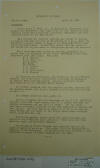
|
47.
April 16, 1931. Press
Release on Nicaragua, US
Department of State.
"DEPARTMENT OF STATE ¶ FOR THE
PRESS ¶ April 16, 1931 ¶
NICARAGUA ¶ Consul Alvin T.
Rowe, jr., at Bluefields,
Nicaragua, telegraphed the
Department last night that Mr.
John Bryan had been reported
killed and a Moravian
missionary, Bregenzer, had been
reported killed on the Coco
River. ¶ Cape Gracias was
reported captured and looted by
bandits. A telegram had been
received at Bluefields at 9
p.m., April 15, reporting a
bandit attack on Rama on the
Escondido River sixty miles from
Bluefields. Consul Rowe stated
that the names of the killed and
injured would be telegraphed as
soon as received. ¶ Eight
Americans were killed by
bandits, according to a report
from the Commander of the U.S.S.
ASHEVILLE to the Navy Department
sent last night. They are: ¶ W.
H. Selser, ¶ W. H. Bond, jr., ¶
Percy Davis, ¶ Rip Davis, ¶ H.
O. Wilson, ¶ J. H. Bryan, ¶ J.
L. Pennington, ¶ J. D. Phelps. ¶
In addition one Guatemalan, one
Nicaraguan and one British
subject, and a few other
unidentified nationals of
Nicaragua or Jamaica were
reported killed. All the
Americans killed were employes
[employees] of the Standard
Fruit Company. ¶ No further
contacts with the bandits had
been reported and the Guardia
patrol left Puerto Cabezas at 6
o’clock the morning of April 15.
¶ The CEFALU sailed at noon,
April 15. ¶ Another telegram
from the Commander of the U.S.S.
ASHEVILLE received late last
night stated that W. H. Selser
was with the Guardia detachment
and was shot in combat. All the
other Americans previously
reported killed were captured by
bandits and then killed. All
were killed on April 11 or 12 in
an area between Sukwas and the
mouth of the Zungla River about
latitude 14-20, longitude 84 –
04. ¶ Twenty-two adults, mostly
women and eight children,
departed on the CEFALU at noon,
April 15. There are only four
American women now at Puerto
Cabezas. ¶ Conditions at Puerto
Cabezas were reported late on
the night of April 15 as quiet.
The patrol found no bandits for
a distance of 26 kilometers. No
bandits have been reported in
the immediate vicinity of Puerto
Cabezas for two days."
|
|
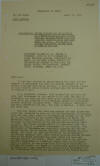
|
48. April 17, 1931.
Prefatory Remarks By Mr. Walter
C. Thurston, Chief of the
Division of Latin American
Affairs, US Dept. of State, at
the 35th Annual Meeting of the
American Academy of Political &
Social Science, Philadelphia,
Sat. April 18, p. 1.
"DEPARTMENT OF STATE ¶ FOR
THE PRESS ¶ April 17, 1931 ¶
LATIN AMERICA ¶ CONFIDENTIAL
FUTURE RELEASE FOR PUBLICATION
IN NEWSPAPERS THAT DO NOT APPEAR
UPON THE STREETS BEFORE 2:30
P.M. (EASTERN STANDARD TIME)
SATURDAY, APRIL 18, 1931. NOT TO
BE PREVIOUSLY PUBLISHED, QUOTED
FROM, OR USED IN ANY WAY. ¶
PREFATORY REMARKS BY MR. WALTER
C. THURSTON, CHIEF OF THE
DIVISION OF LATIN AMERICAN
AFFAIRS, DEPARTMENT OF STATE, AT
THE 35TH ANNUAL MEETING OF THE
AMERICAN ACADEMY OF POLITICAL
AND SOCIAL SCIENE [SCIENCE],
PHILADELPHIA, PENNSYLVANIA,
SATURDAY, APRIL 18, 1931. ¶
Gentlemen: ¶ I have been invited
to appear before you today for
the purpose of addressing you
upon the general subject of our
future relations with Latin
America. I have prepared a paper
on that subject, which I shall
shortly have the privilege of
reading to you. ¶ I am
confident, however, that as
American citizens you have been
distressed by the events of the
past few days in Nicaragua, and
that you will wish to be
informed of the situation which
has resulted in the shocking
murder of unoffending private
American citizens there. That
situation, Gentlemen, has been
created by one man. His name is
Sandino. I shall tell you about
him. ¶ You will recall that what
was perhaps the most disastrous
civil war, measured by loss of
life and destruction of
property, that has ever taken
place in Nicaragua was brought
to its close by the good offices
of our present Secretary of
State, the Honorable Henry L.
Stimson, who had been sent by
President Coolidge to that
country as his Special
Representative early in 1927.
The actual accomplishment of
this peace took the immediate
form of a general disarmament of
the country. The Government of
Nicaragua was completely
disarmed and the opposing
forces, led by General Moncada,
were likewise all disarmed. All,
that is, save the forces of one
of Moncada’s chieftains,
Sandino, who, after having
promised General Moncada that he
too would surrender his arms,
broke his word and secretly fled
to the hills. There, safe within
the pathless mountain fastnesses
of a desolate region some 15,000
square miles in extent, he has
preyed upon his fellow
countrymen by pillage and
murder, and waged an
intermittent guerilla warfare of
ambush and flight against the
forces of his Government and the
cooperating forces of the
Government of the United States.
. . . "
|
|
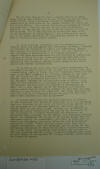
|
49. April 17, 1931.
Prefatory Remarks By Mr. Walter
C. Thurston, Chief of the
Division of Latin American
Affairs, US Dept. of State, at
the 35th Annual Meeting of the
American Academy of Political &
Social Science, Philadelphia,
Sat. April 18, p. 2.
" . . . He was well trained for
such a career, for it is
understood that he was schooled
in similar tactics by service
under Pancho Villa, whose
activities resulted in bloodshed
and destruction on both sides of
the common frontier of Mexico
and the United States. His
present followers are outlaws of
varied nationalities – they are
not all by any means
Nicaraguans. Moreover, he was
already familiar with the
terrain in which he now
operates, for he was employed by
an American mine owner in the
Department of Nueva Segovia –
his patron’s mine being one of
the first properties to be
seized and looted by Sandino
when he turned to his present
career. ¶ It is an ironical
commentary upon the unequal
struggle between truth and
propaganda that this petty
chieftain, schooled in outlawry
and dedicated to rapine and
destruction, should have assumed
the proportions of a hero, even
of a defender of the “vestiges
of sovereignty in an invaded
republic”. I regret that such
misconceptions are not confined
to misinformed citizens of Latin
America, whose sentiments might
have been influenced by the ties
of race, but have been shared
and expounded by some American
citizens whose access to the
facts should have better
informed them. ¶ It is such a
man then, who, when a great
catastrophe has overtaken his
native land and at the time his
capital city lies a smouldering
waste of ruins, when the
Nicaragua Government has been
practically paralyzed and has
been obliged to call upon all
its forces and all its resources
for the essential immediate task
of protection and relief in the
neighborhood of the disaster,
devises and deliberately sets in
motion a program for the
destruction of American and
other foreign lives and property
and the lives and property of
Nicaraguans as well, not in open
warfare but by the stealthy and
ruthless tactics which
characterized the savages who
fell upon American settlers in
our country 150 years ago. For
these Americans who have been
killed in Nicaragua during the
past few days were first taken
prisoner and then slaughtered. ¶
A further word about the alleged
patriotism of Sandino. It has
frequently been stated by those
said to be his spokesmen that
his objective is not loot, but
that his only purpose is to rid
Nicaragua of the American
Marines. How truly are his
colors shown by his recent acts!
As long ago as February 13
widespread public announcement
was made by our Government of
the conclusion of a program
whereunder the Government of
Nicaragua would increase its own
forces, the Nicaraguan National
Guard, and whereunder the forces
of the United States would be
decreased rapidly and
drastically, and would be
completely removed from
Nicaragua immediately after the
next presidential elections of
1932. Within the two months
which have since elapsed 154
Marines have left Nicaragua and
the plans for the continuing
evacuation of those forces are
in active operation. It is under
these circumstances that Sandino
has resorted to the very
measures against foreign lives
and property that would be most
likely to precipitate the
foreign military intervention he
is said to oppose. . . . "
|
|
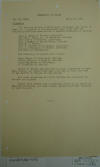
|
50. April 17, 1931.
Prefatory Remarks By Mr. Walter
C. Thurston, Chief of the
Division of Latin American
Affairs, US Dept. of State, at
the 35th Annual Meeting of the
American Academy of Political &
Social Science, Philadelphia,
Sat. April 18, p. 3.
" . . . DEPARTMENT OF STATE ¶
FOR THE PRESS ¶ April 17, 1931 ¶
NICARAGUA ¶ The American Consul
at Bluefields, Nicaragua, Mr.
Alvin. T. Rowe, jr., reported to
the Department last night that
the following Americans were
killed in Eastern Nicaragua by
bandits: ¶ John H. Bryan of
Clinton, Maryland; ¶ William H.
Bond, jr., of Sarasota, Florida;
¶ Percy Davis of Hammond,
Louisiana; ¶ Will L. Selser of
Little River, Florida; ¶ Herbert
H. Wilson; ¶ John D. Phelps of
Livingston, Louisiana; ¶ John L.
Pennington of Croset, Arkansas;
¶ Rip Davis of Mississippi. ¶
The following foreigners were
killed: ¶ Henry Roper of
Bluefields, British; ¶ Walter
Manning of Jamaica, British; ¶
Moses Sagastume of Guatemala; ¶
F. O’Ramirez of Corinto. ¶
Hubert O. Wilson was reported by
press despatches to have been
killed, but Consul Rowe says
this was an error and that it
was Herbert H. Wilson who was
killed. ¶ All other Americans at
Puerto Cabezas are accounted for
and none are injured. ¶ Consul
Rowe states that a previous
report of an attack on Rama was
erroneous, but small bandit
groups have been reported in
that vicinity."
|
United States National Archives, Record Group
165, Entry 77, Box 2653.
|
|
top of page |
|
|

